April 26, 2020
Martha O'Kennon
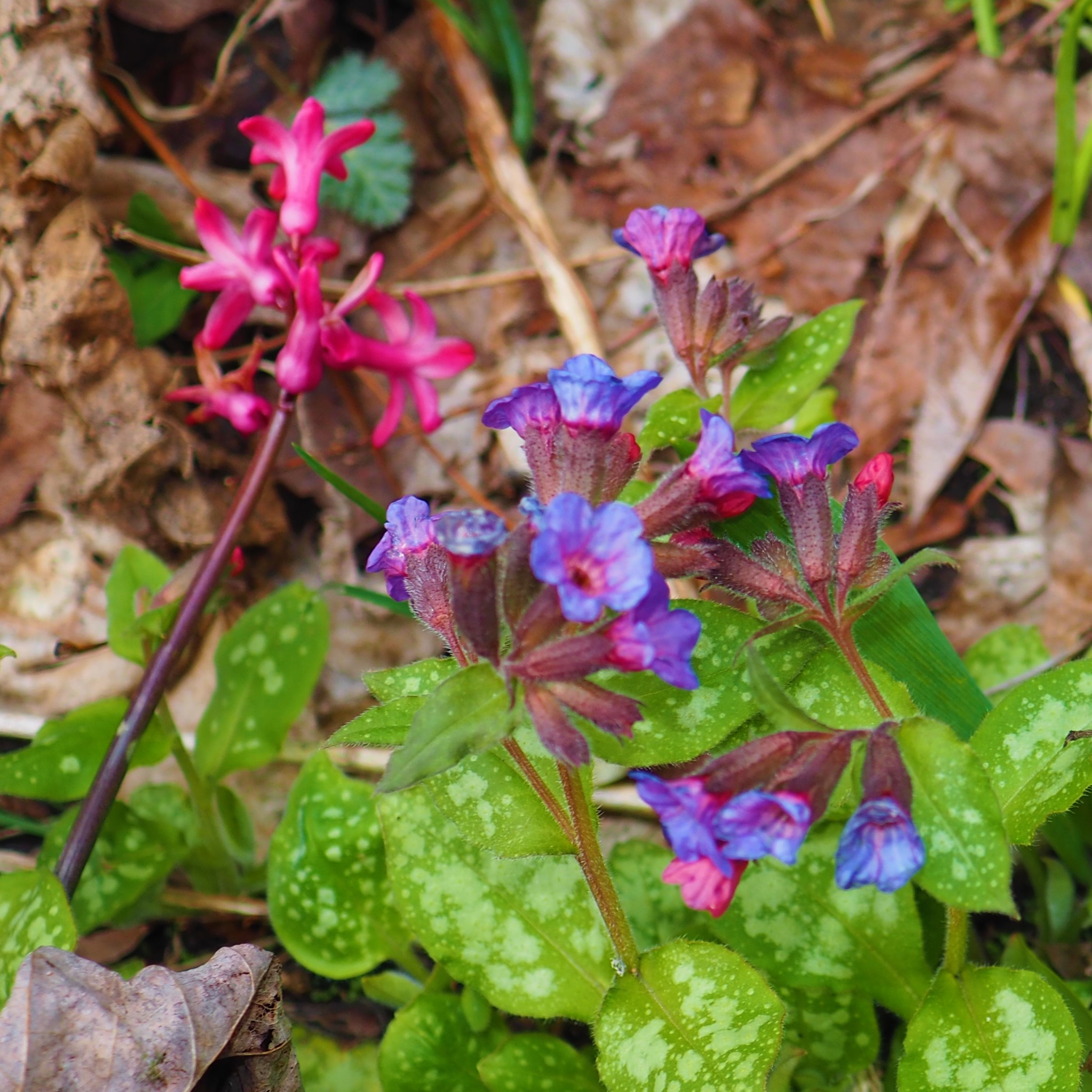
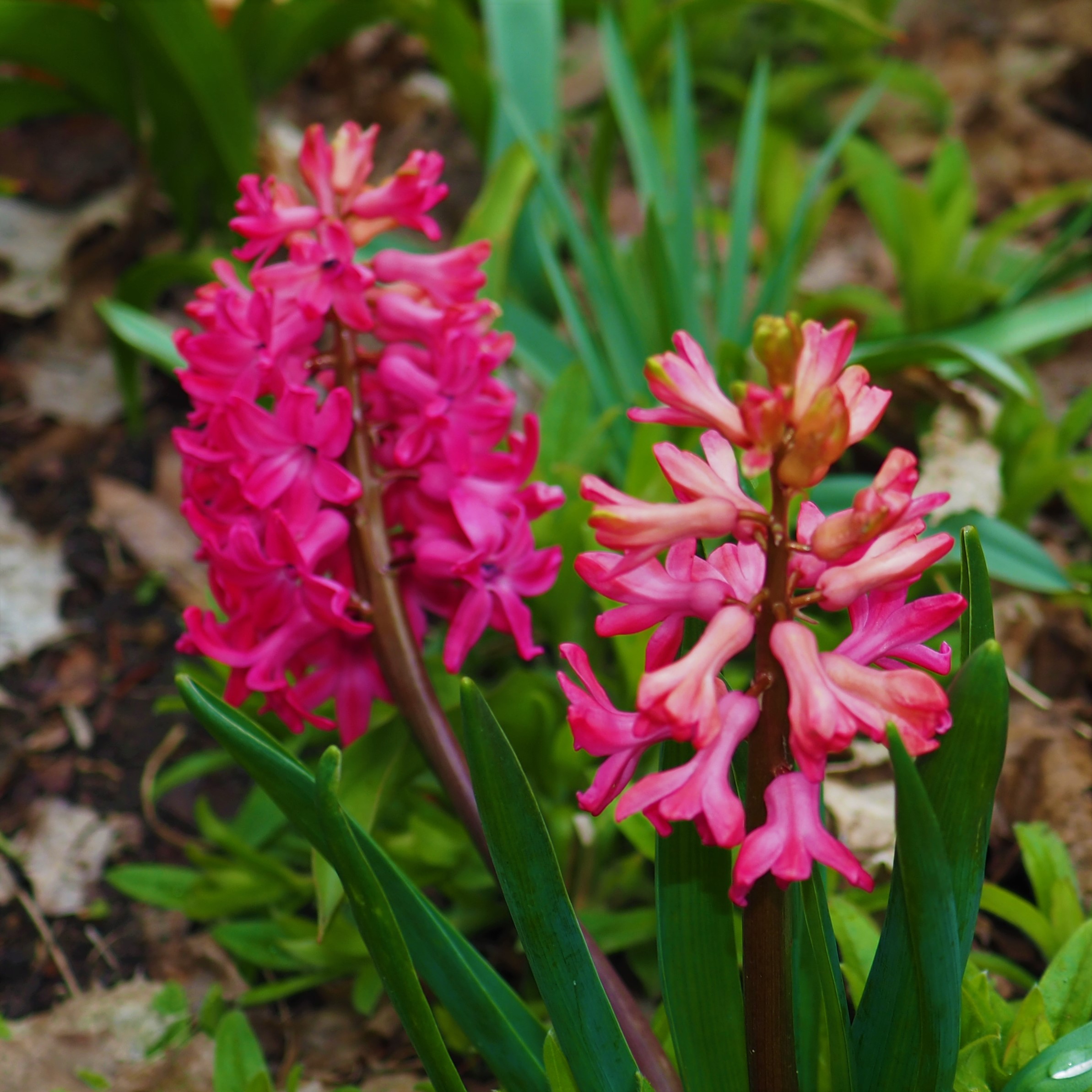
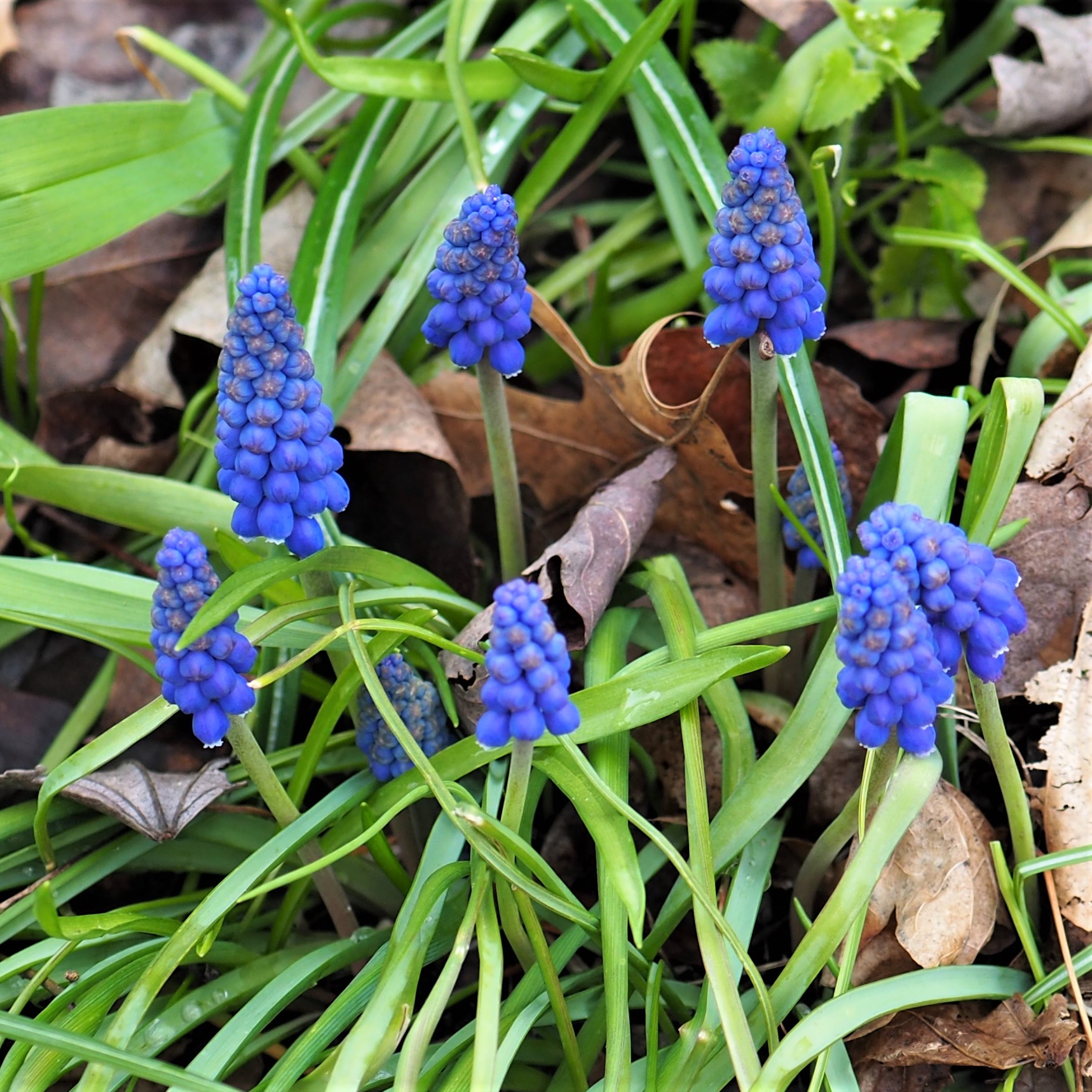
Spring is gaining on Winter. It's been a month since the putative Spring began. Most days this week had at least a couple of hours without rain dripping down our necks. As you know, we don't have much in the way of big flowers but we have a lot of tiny vignettes. Here you see a small hyacinth and a spray of Pulmonaria showing all the colors they assume as the flowers age. Then our champion Pink Hyacinth: one in full color and the other slowly progressing. Third is a fresh patch of Grape Hyacinths. We'll be talking more about those enchanting little flowers.
Remember that there is information in the name of the file for each image. You can see it by mousing over the image - look at the lower left of the screen. Or you can click on the image to get to the (usually) larger image. Then the info is displayed in the address line above. Sometimes the second click will actually display a different view of the original image.
Last week we showed how the Small Honey Ants, which had been the only Ant I remember seeing all winter, were finally infiltrated by ants of the genus Camponotus (Carpenter Ants). This week you'll see a few others. Of course, we pay respect to our oldest friend, the Small Honey Ant. Does picture 3 seem a bit off? I mean, the Small Honeys do have quite large gasters. But not like this! This one seems to have been on a VERY successful trek for food.
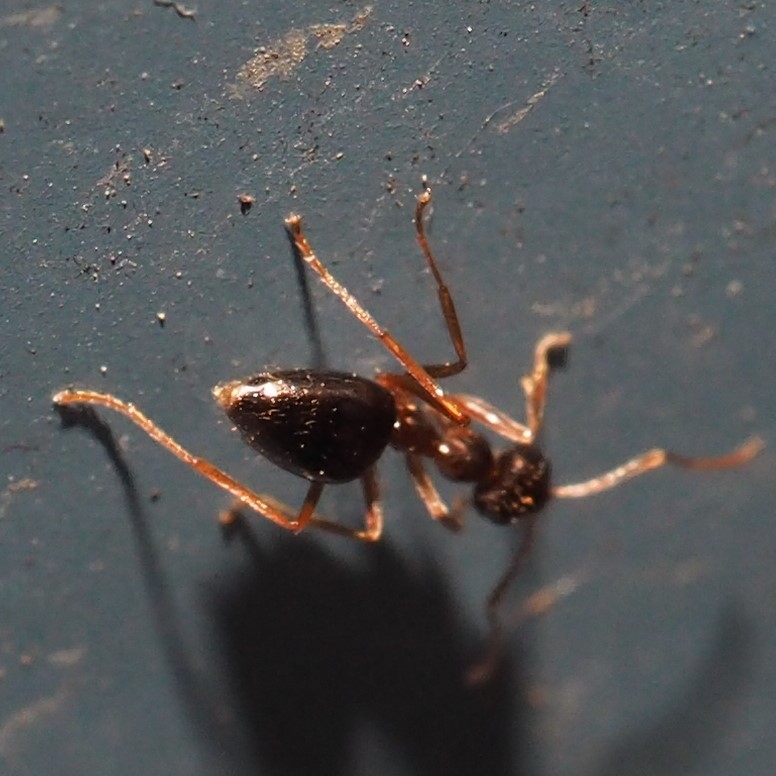
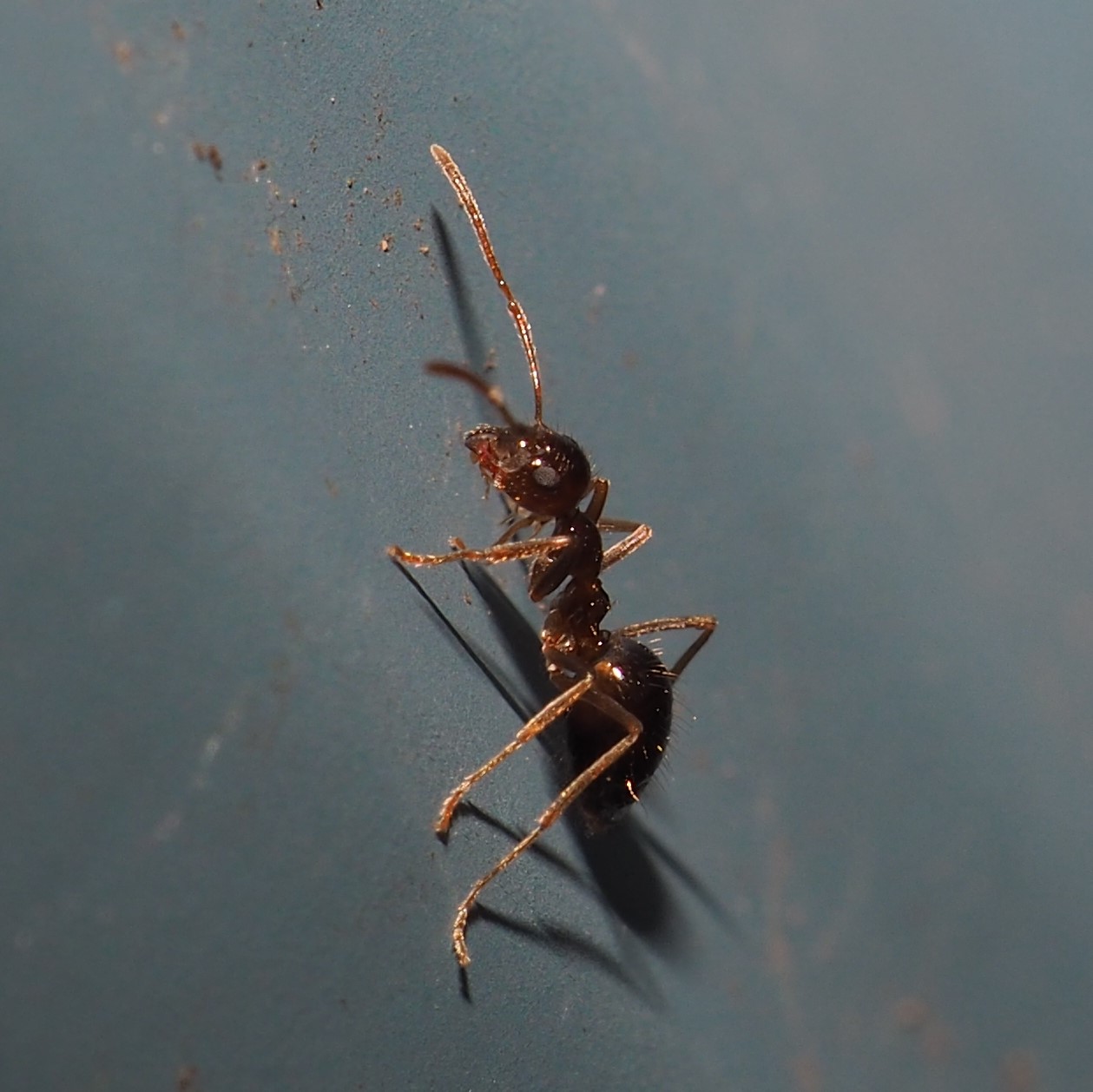
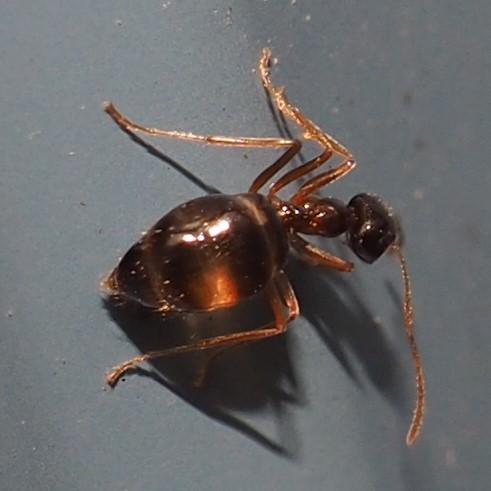
This ant was SOOOOOOO small. Only about one millimeter long. That's about a third of an eighth of an inch. Very little even for an ant. It also has a quite long rather skinny gaster (abdomen). When I went back to my archive I found only one ant where I'd annotated it with that length. That was an Odorous House Ant, Tapinoma sessile (picture 2). I checked this with Steven Wang from iNat and he agreed. Pictures 1 and 3 are this week's photos.
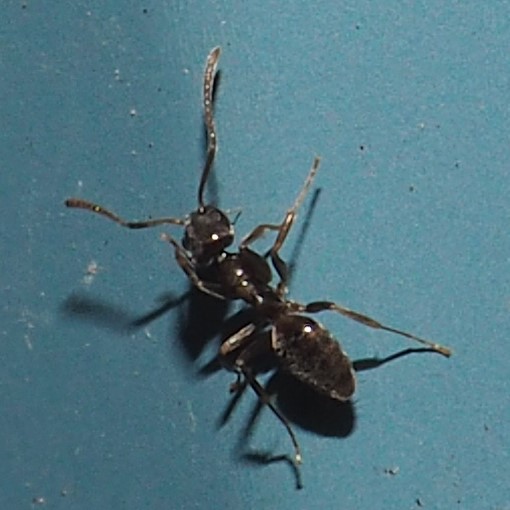
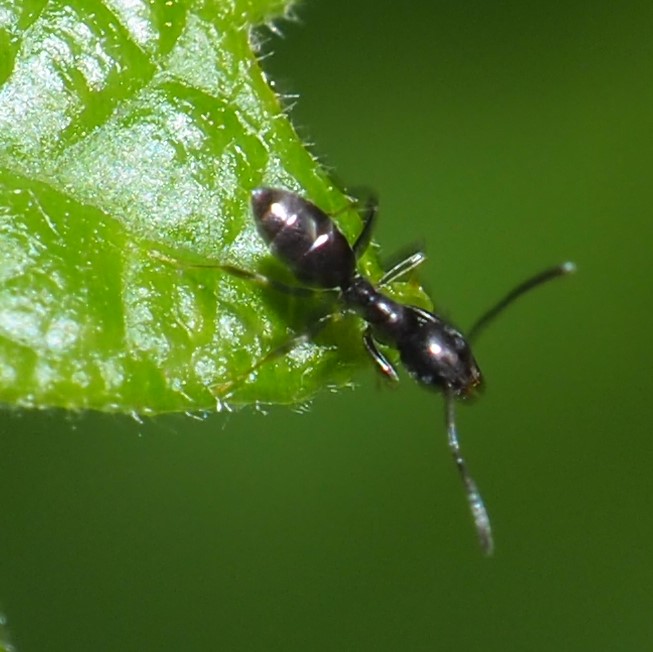
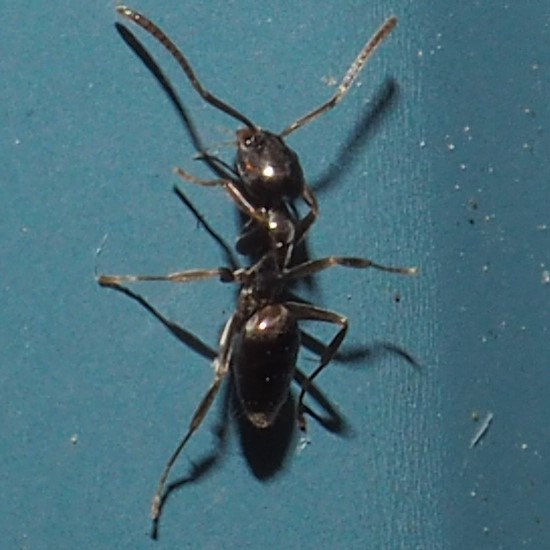
I confused this ant (picture 1) with the Myrmica that Steven Wang and Peter Slingsby of iNat identified last week (picture 2). Third is another of this week's catch. The ID app in iNat said "genus Temnothorax", and so did Peter Slingsby.
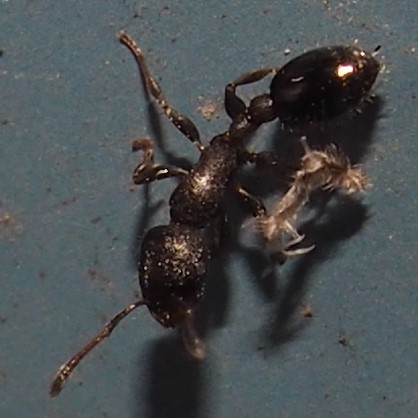
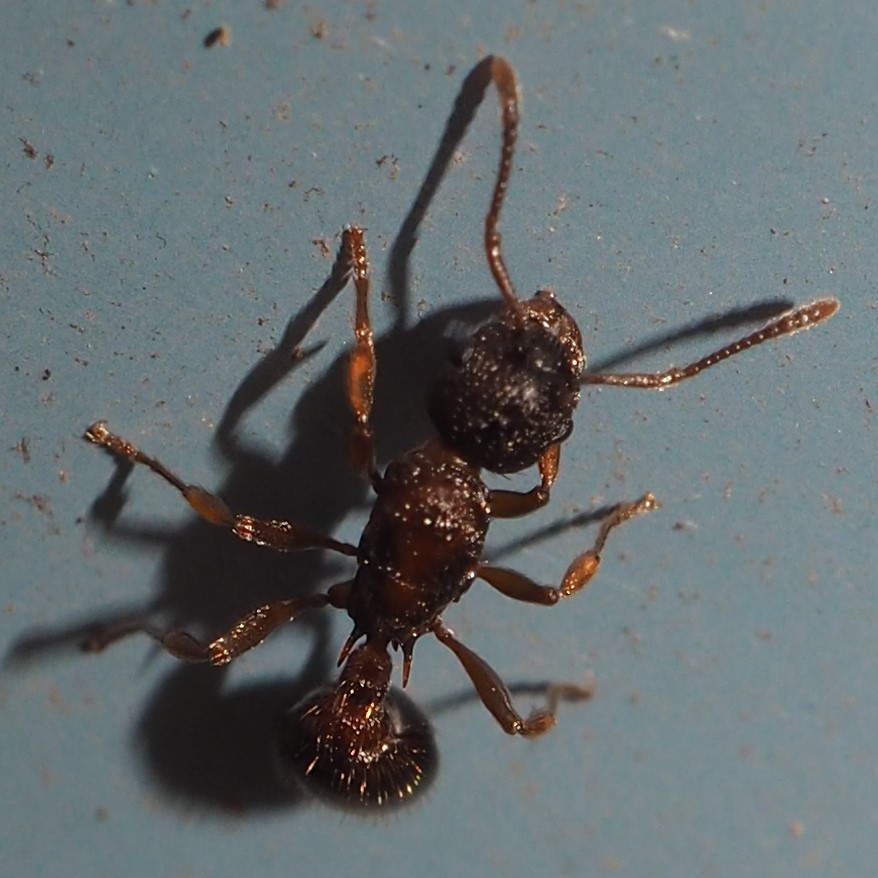
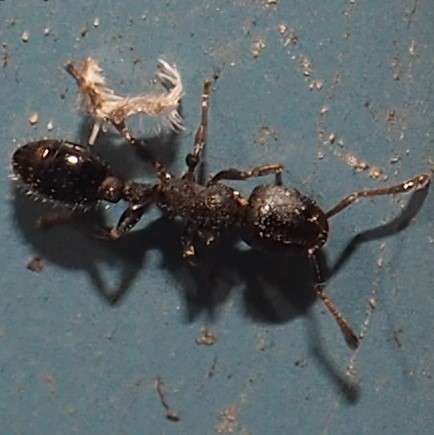
We had at least one new Bee, namely the Hornfaced Bee (Osmia cornifrons) (Pictures 1 and 2). I'm not sure what the third little bee in the Grape Hyacinth is.
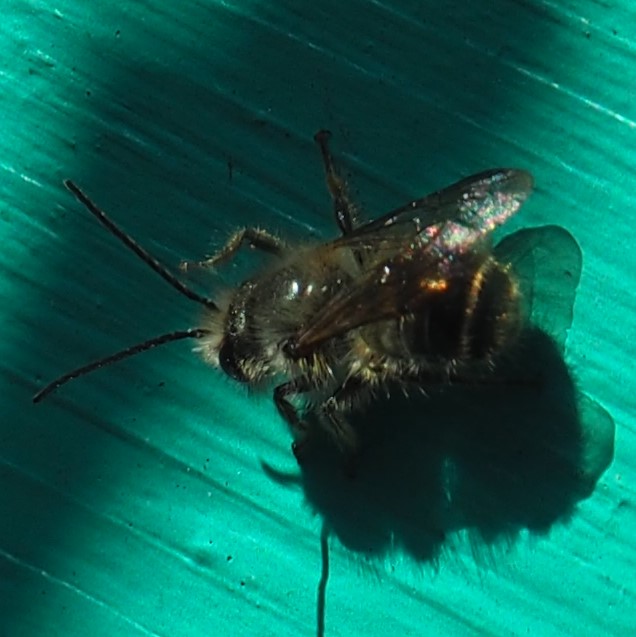
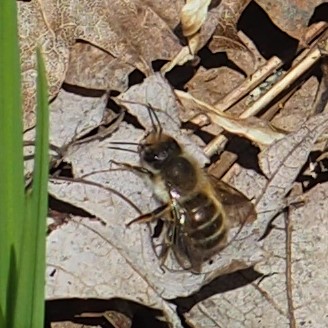
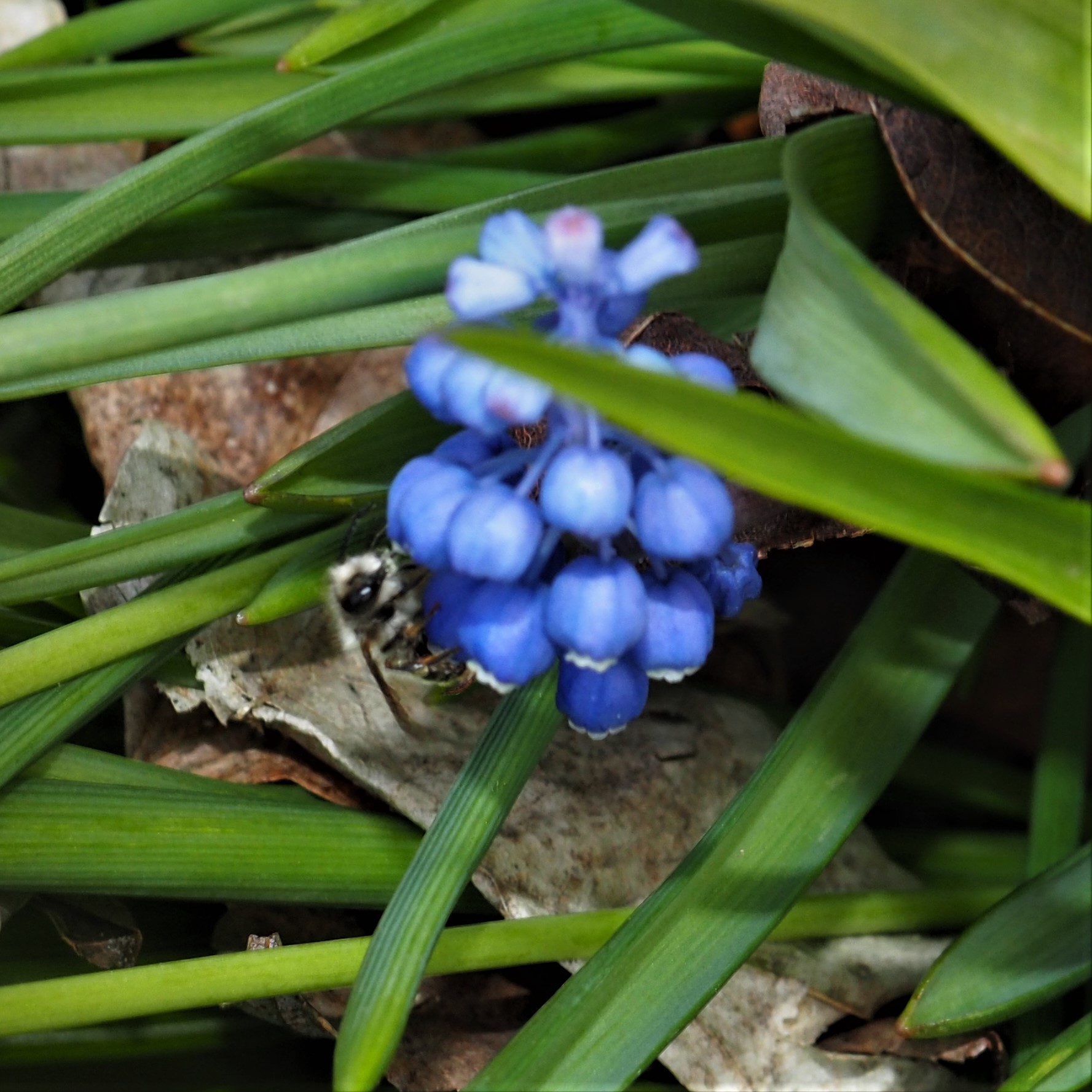
Beetles - We had several kinds - like this first fat brown one. Also this tiny orange one. Then came a Rove Beetle and finally a Red Lily Leaf Beetle. Last year the Lily Leaf Beetles did in the Tiger Lilies before they had finished blooming. Brrrr! How damaging they are to Lilies. Let's see who they will eat this year.
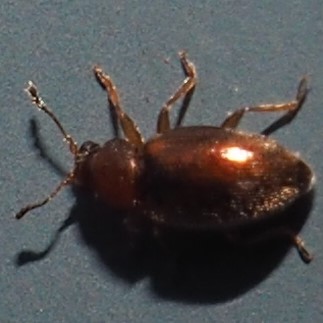
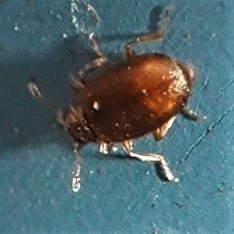
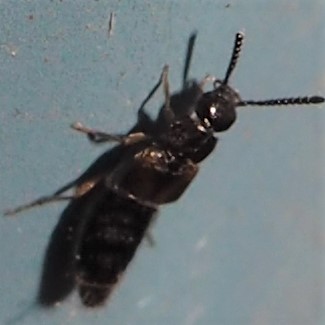
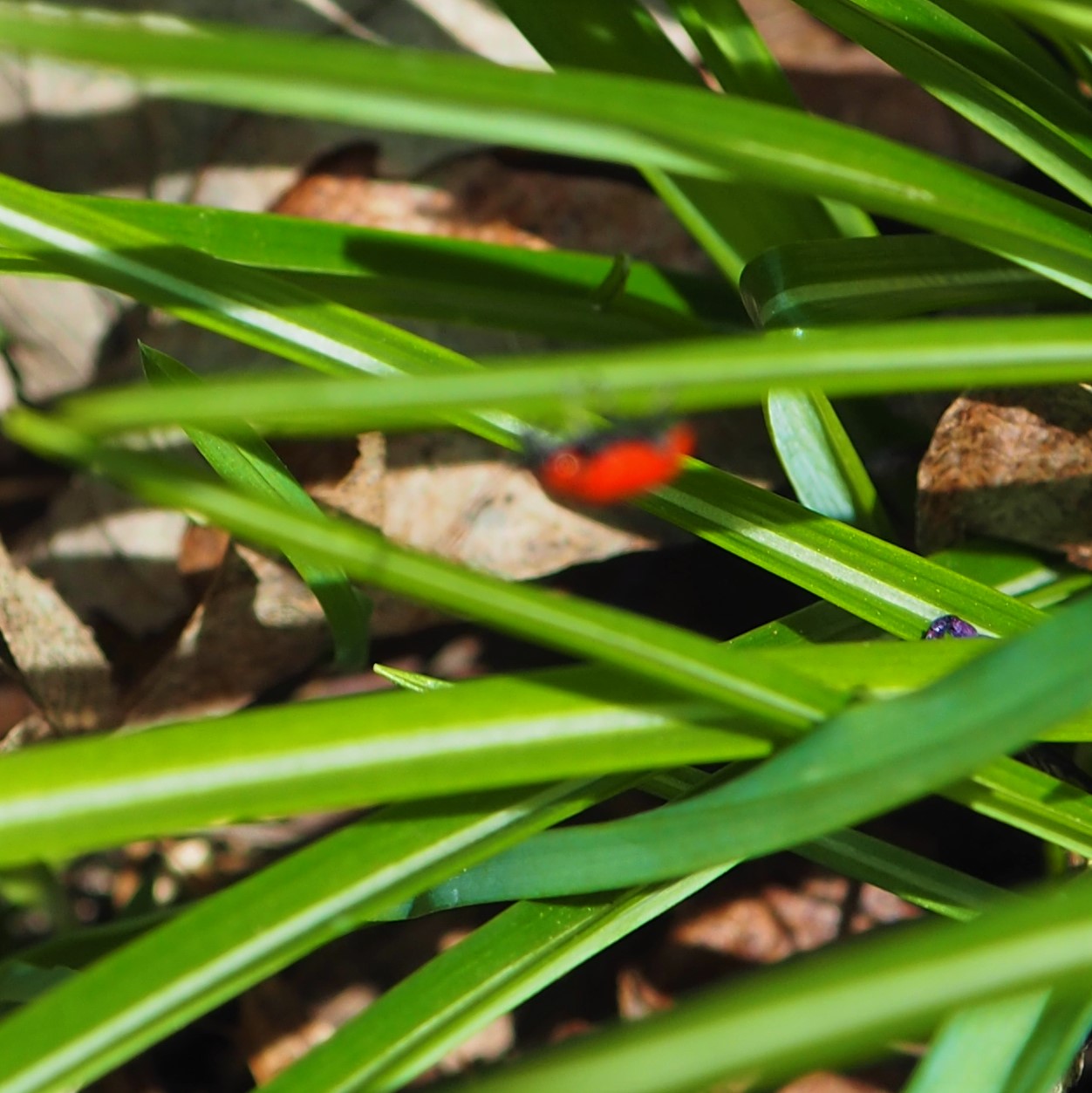
Whenever we want a Bug for a particular week, it doesn't hurt to see if we can't find an Assassin Bug, one of the Zelus genus. Usually I first see Zelus luridus, the Pale Green Assassin Bug. It is usually shades of green with red eyes. But this year I've only seen Z. tetracanthus, the Four-spurred Assassin Bugs. They are mostly brownish with grey/brown eyes. I still haven't seen my little green friend! If you have your sharp eye glasses on, you probably see what I didn't in pictures 1 and 2 until I had the little guys inside cropping them - that little red critter! I'm trying only to kick myself metaphorically!
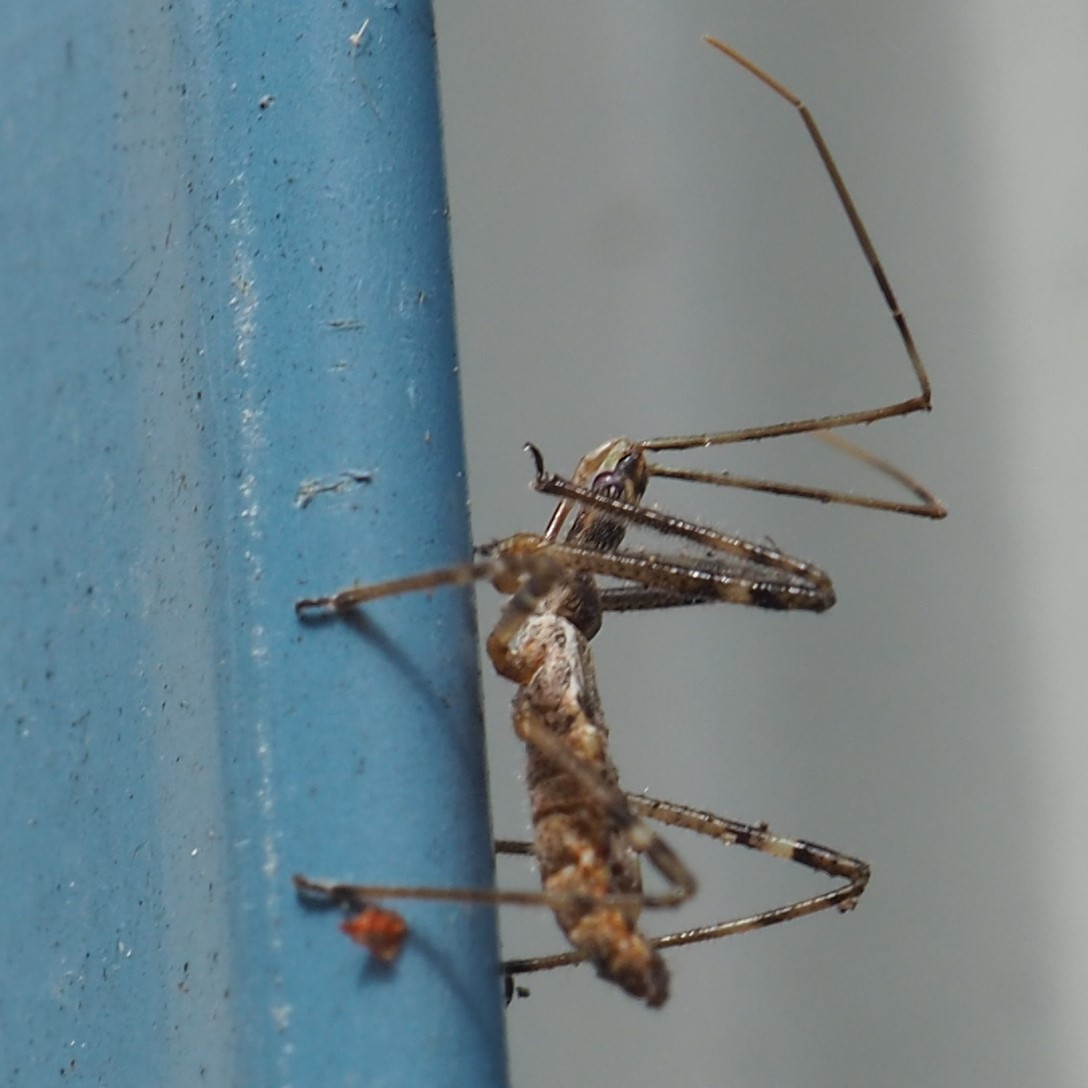
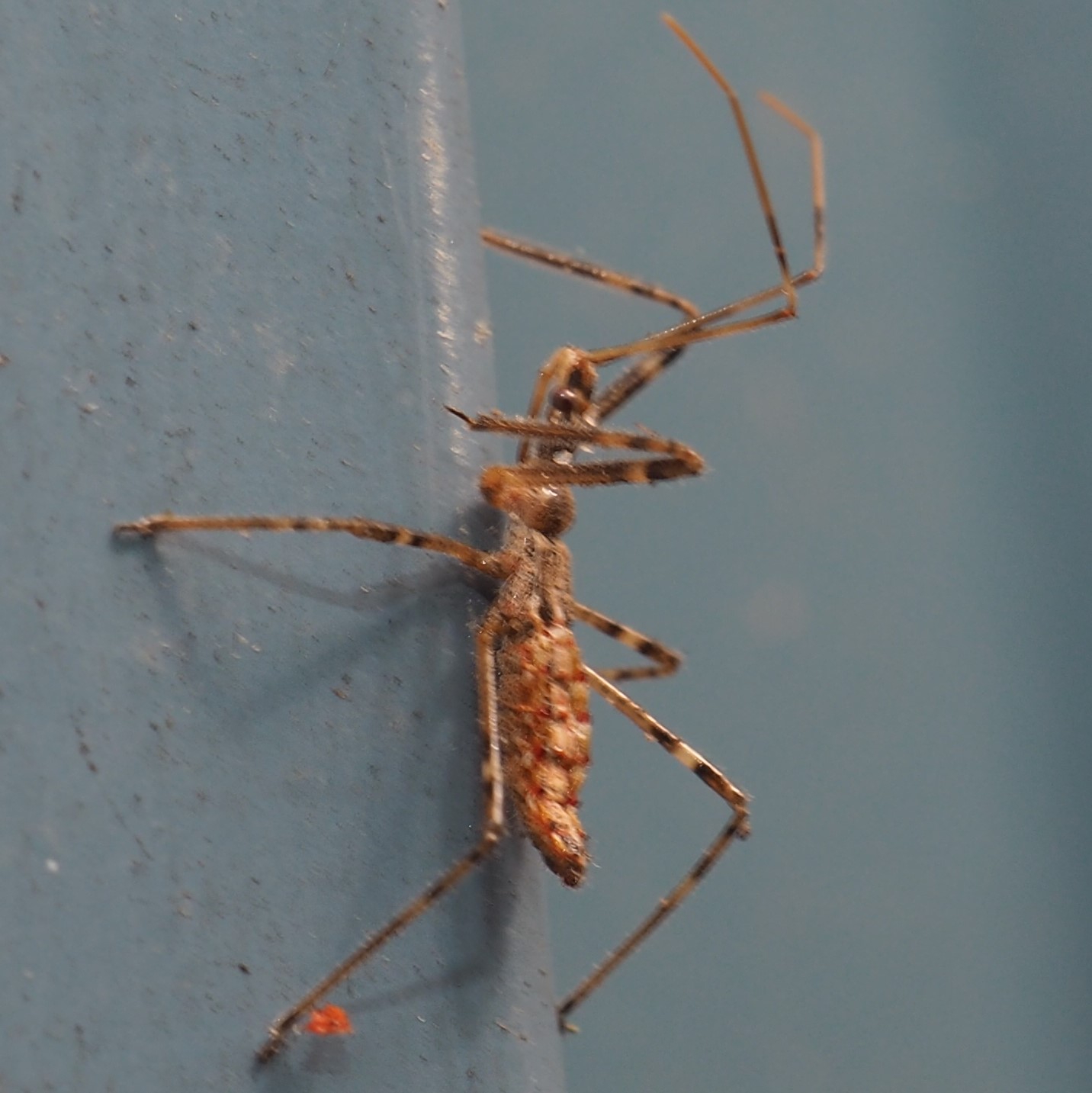
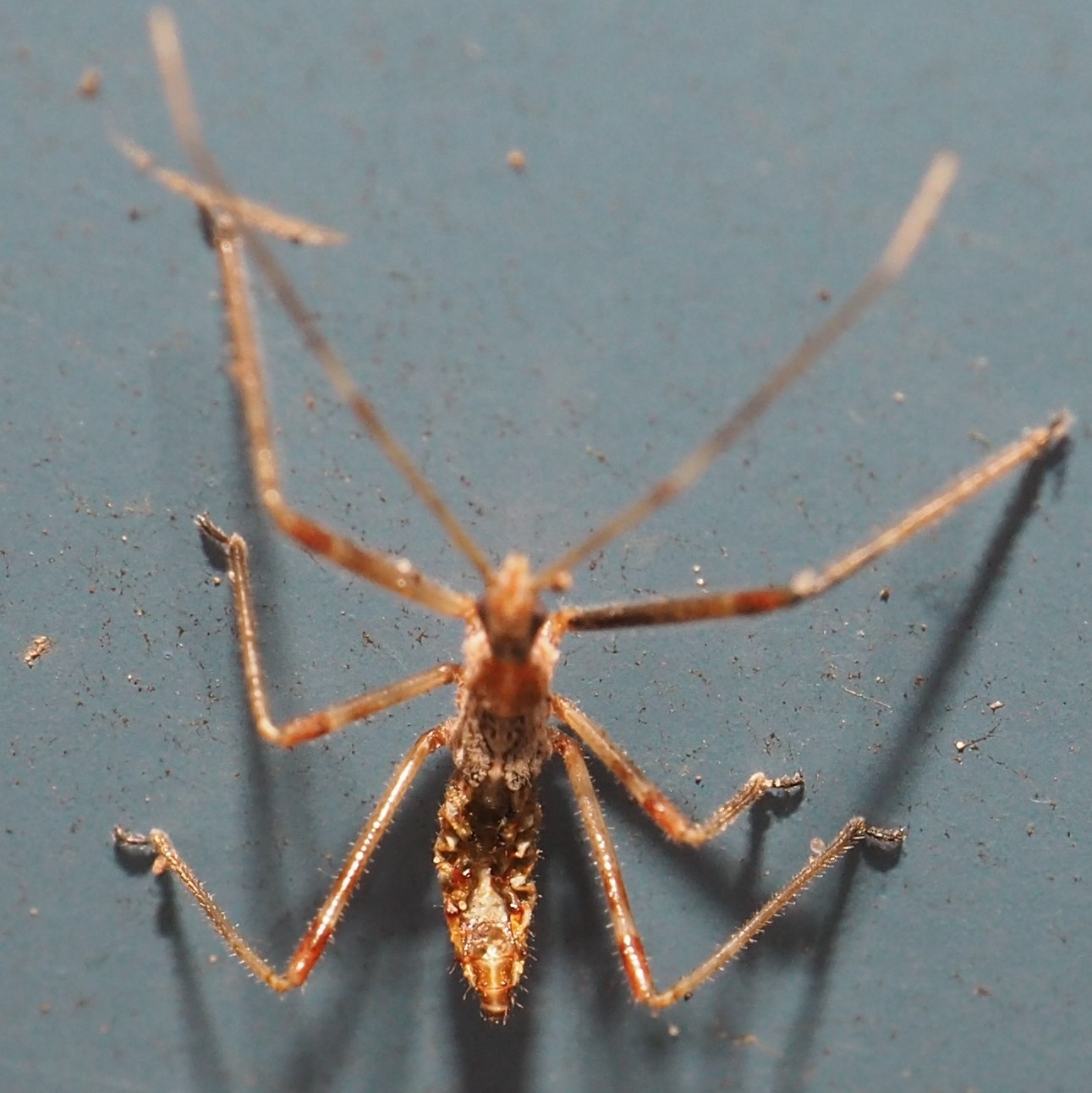
Looks as if our old friend Drymus unus is still here. I wonder where it spent the cold months - probably under the shop. Third is probably a Birch Catkin Bug- we had one last year. Finally, here is a surprise from Bugguide.net. I had sent in this Treehopper in 2016 and just yesterday Kyle Kittelberger finally found it and identified it as Telamona monticola! I had flagged it because as in picture 4 the treehopper was not far from the egg of a Two-mark Treehopper, presaging my later fascination with that kind of Treehopper!
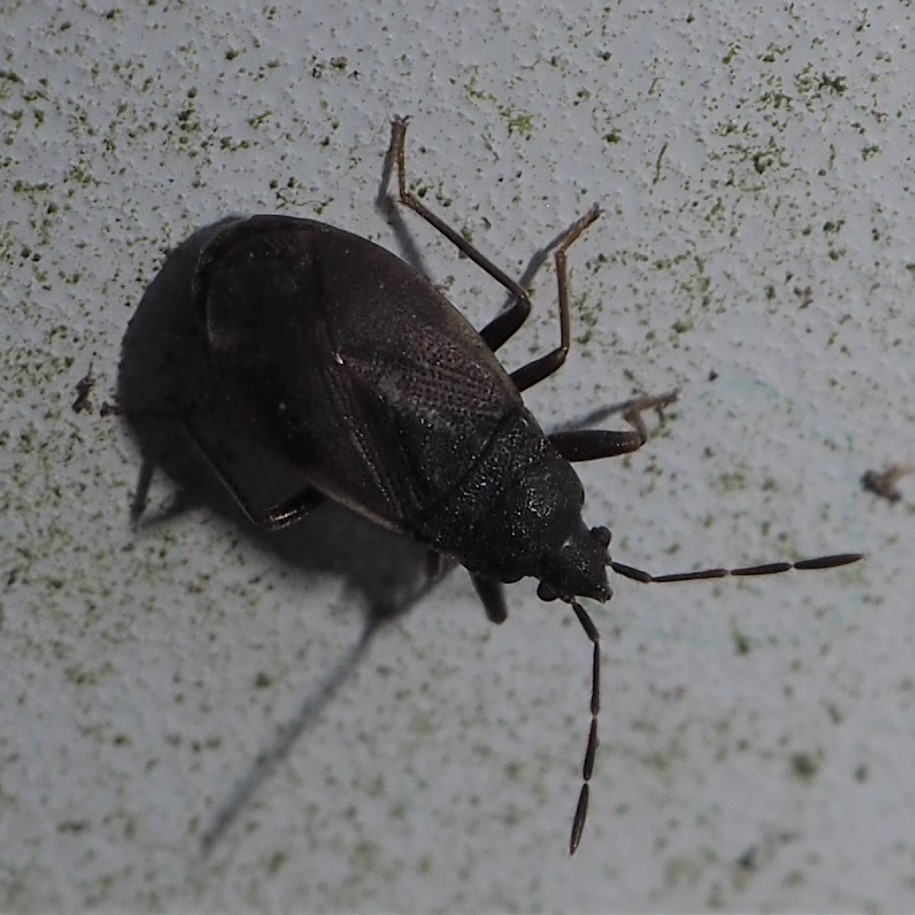
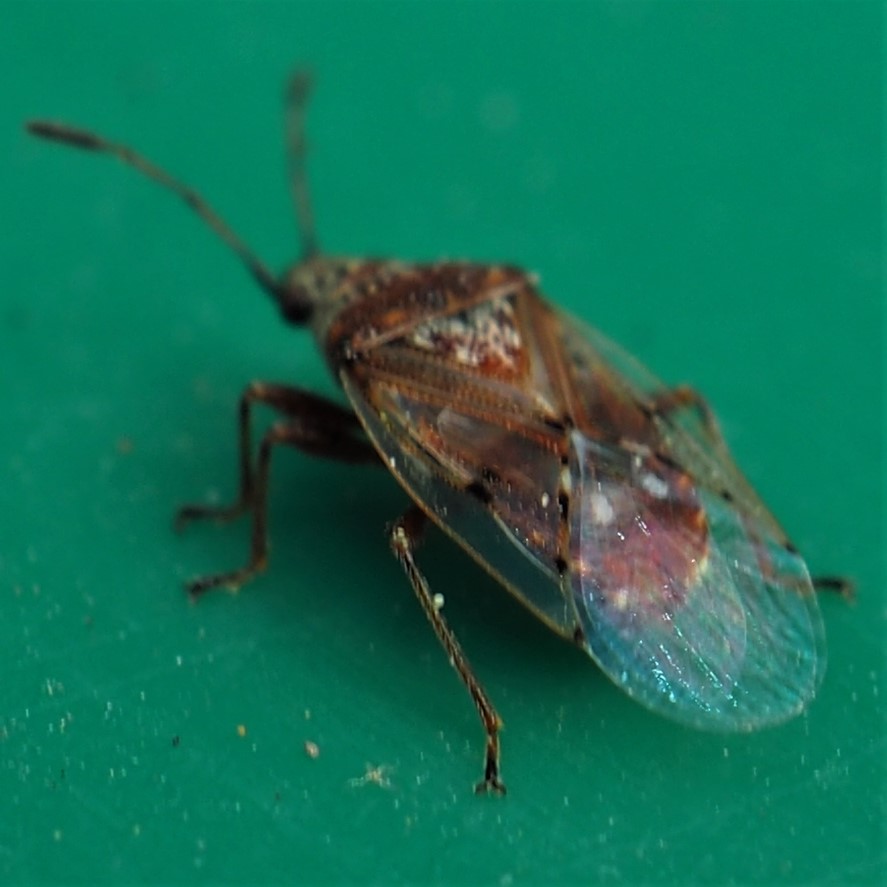
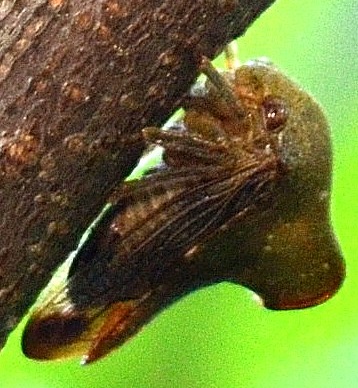
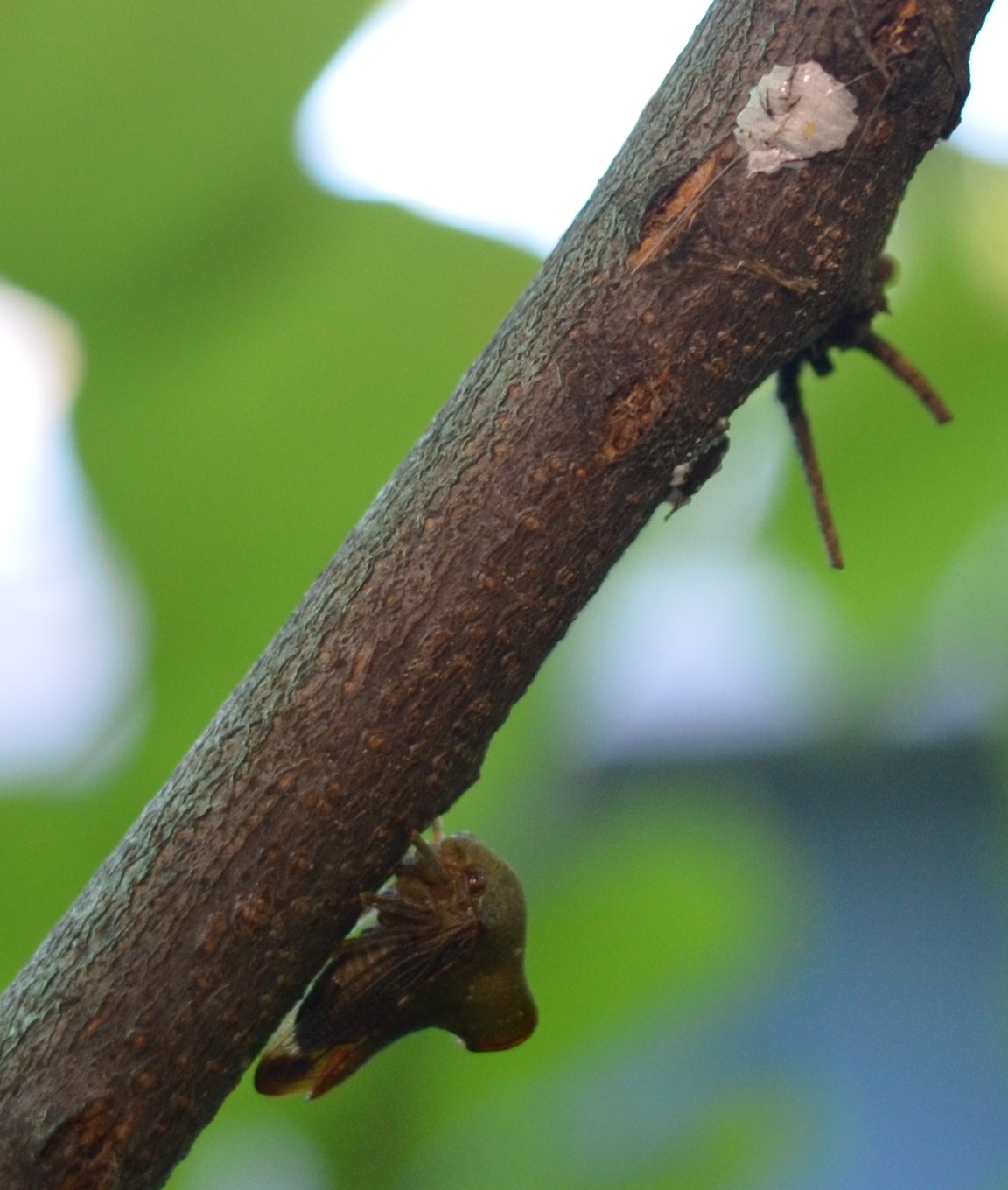
Last night among a lot of really junky junk email, I had two items from Bugguide.net. It seems that one creature I'd sent in in 2015 had been found and finally diagnosed. It's in the tribe Aedini but is in the genus Ochlerotatus, not Aedes, so it's a cousin of that pesky carrier of several nasty diseases, like Zika, but an innocent bystander, Ochlerotatus trivitattus. It doesn't even have a common name. One of its relatives is Ochlerotatus Japonica, as in the next section.
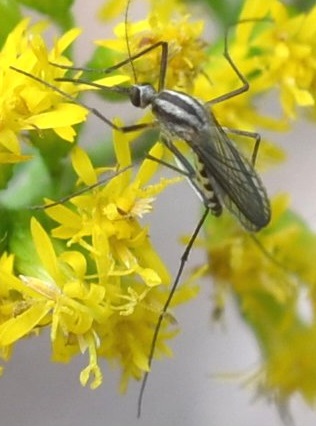

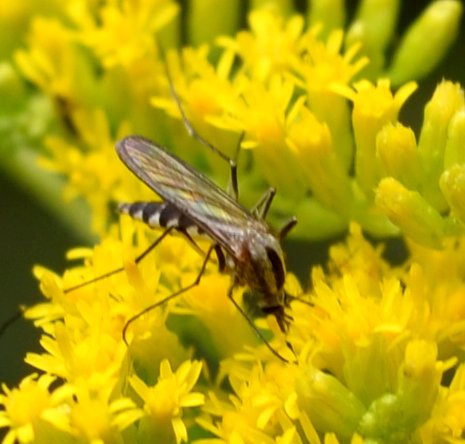
Here is the other Ochlerotatus japonicus, the Asian Rock Pool Mosquito. So easy to confuse with the Aedes genus because of the black and white banded legs. First is female and the other male.
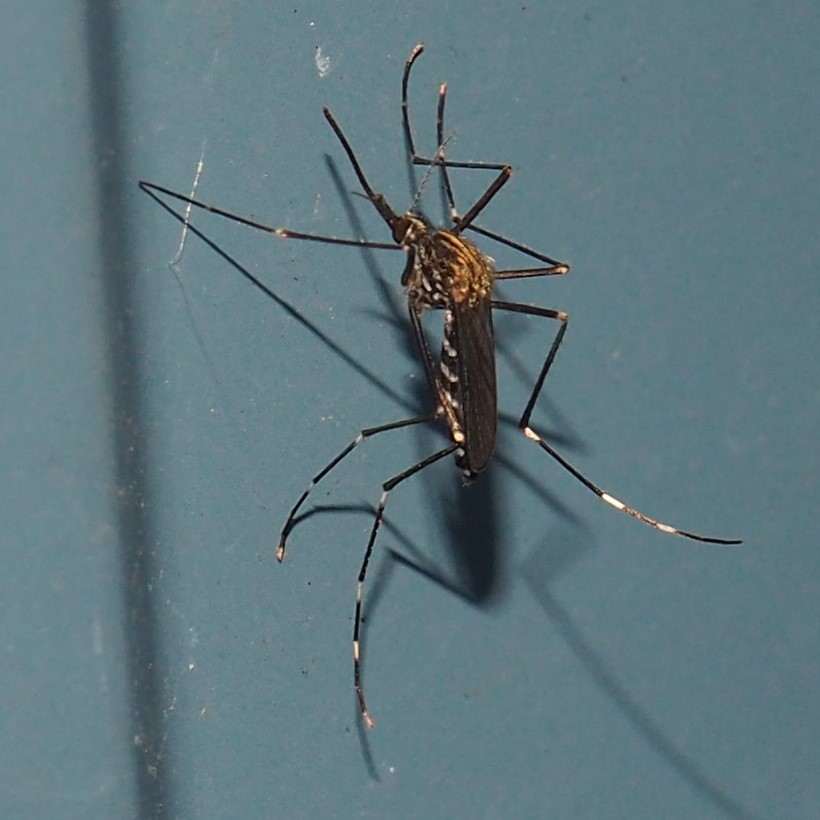
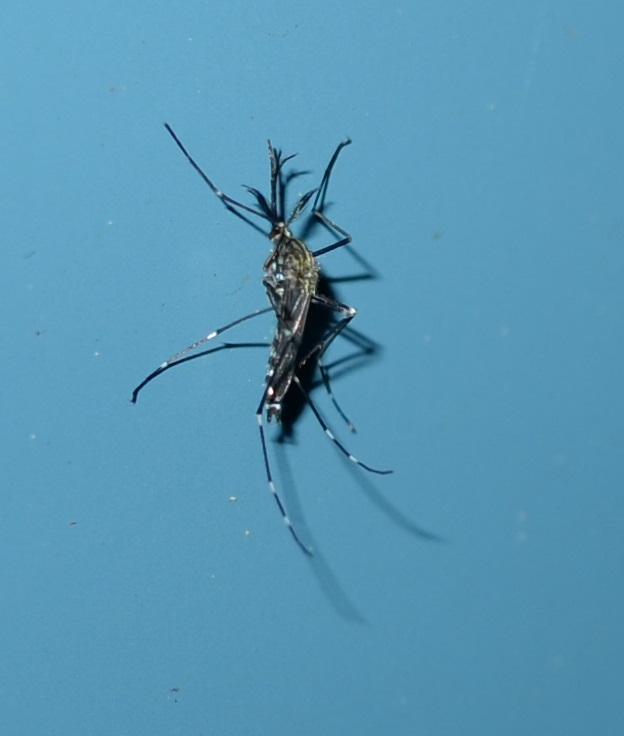
I think what I'm going to do this week with the flies is, instead of presenting the same old same old ones first and then trying to wake you up with the good stuff. So I'm going to pick my favorites first - you might miss some organization but you never said before how nice it was to have so much good organization, so maybe you don't care - anyway, it's my blog and you can write your comments after you read it - maybe not while you're in the middle. I've been indoors so long except for a few jaunts to visit the wall of fame - lemme outta here. OK.
One of my favorite groups of flies are the Hover Flies. The female comes to the pond to lay her eggs there. It's called a Narrow-Headed Marsh Fly. If you really want to go stark raving, go to Bugguide.net and try to understand the way you tell if this is a male or female. I should have said, go to BG and join me in a padded cell. All I know is that the female comes to the pond and dips here abdomen into the water, hence laying her eggs, one by one. The larvae will then eat dead plant matter, so acting as sanitation engineers. The male may come to the pond to meet females so just being here doesn't mean much as far as sex determination! But it's still a handsome fly!
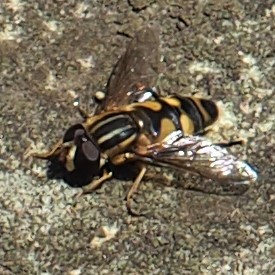
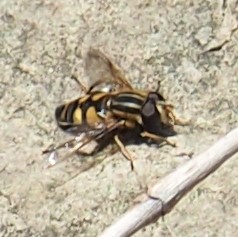
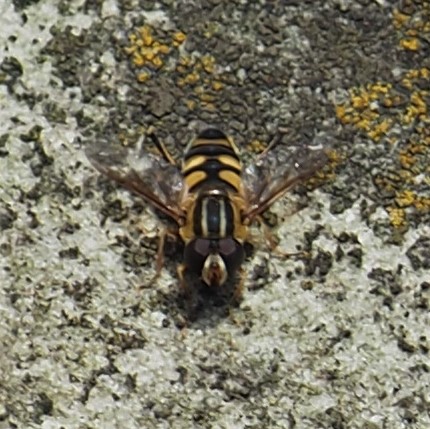
This pretty fly was a new one to me. I don't even think it has a common name, but is called Asteia beata or Blessed Asteia. The second one must be related to or the same as the one called a Black Fly last week. Third is the one from last week for comparison.
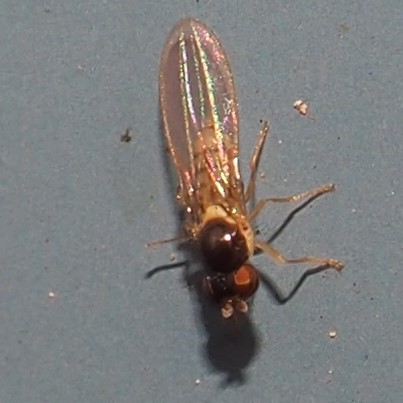
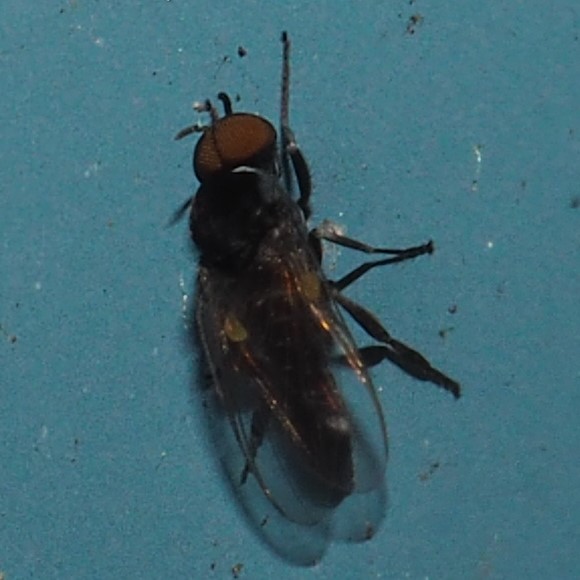
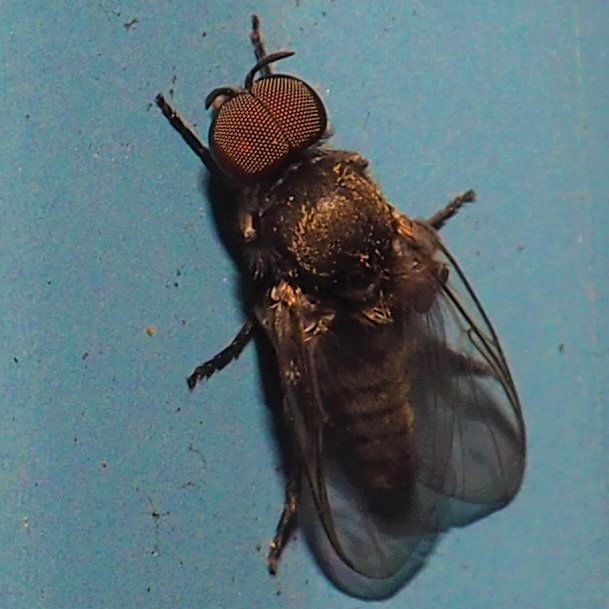
I do think the Crane Flies are some of the most aesthetic in the world. They are built like ballet dancers and manage to stay in such good shape even though they eat every bug in sight. Next is a pretty fly with a nasty name - the Dung Fly. The third one here also has a rather off-putting name (Fungus Gnat) even though it is a very striking specimen of a lovely shade of Orange.
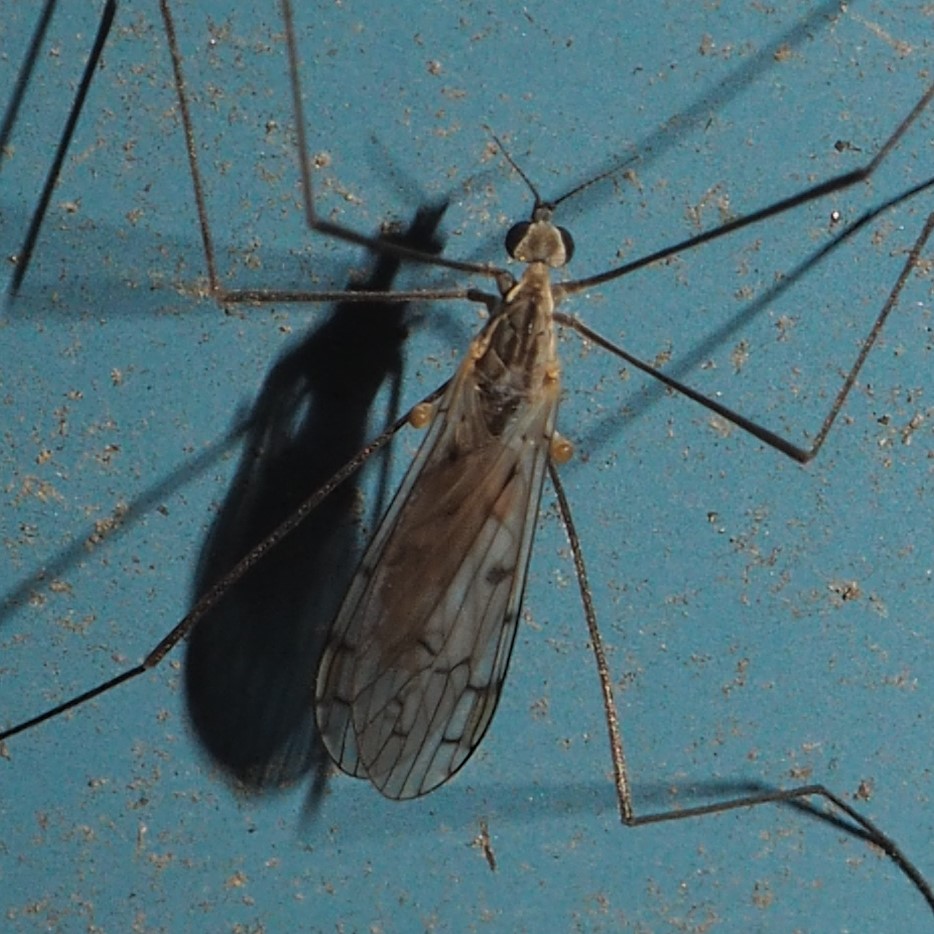
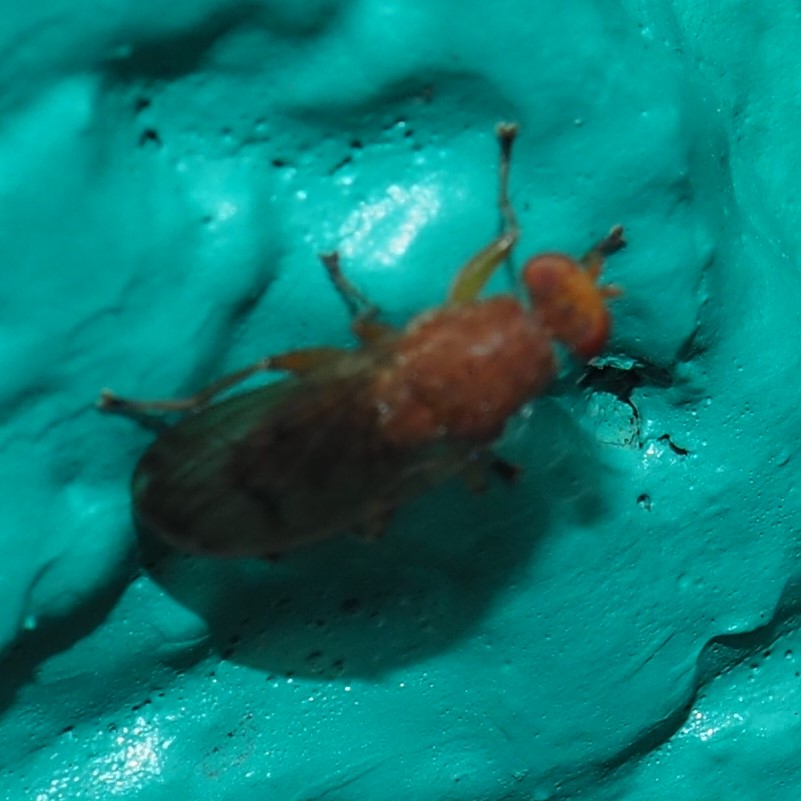
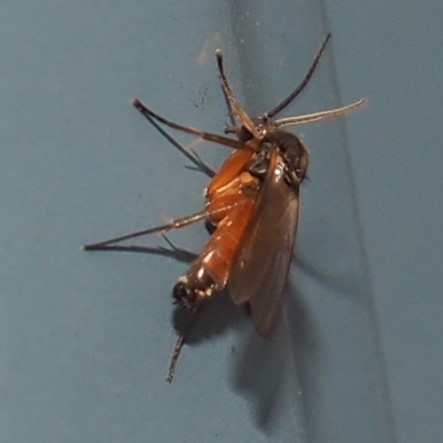
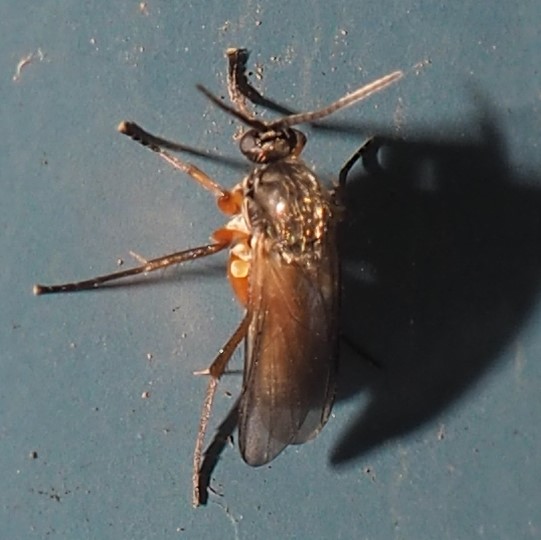
The Lacewings look so delicate. Hard to imagine they live on other critters. The last fly is a new one to me - I still haven't submitted it for an ID. But I love the shiny iridescent wings! Same for the last one with its blue iridescent wings!
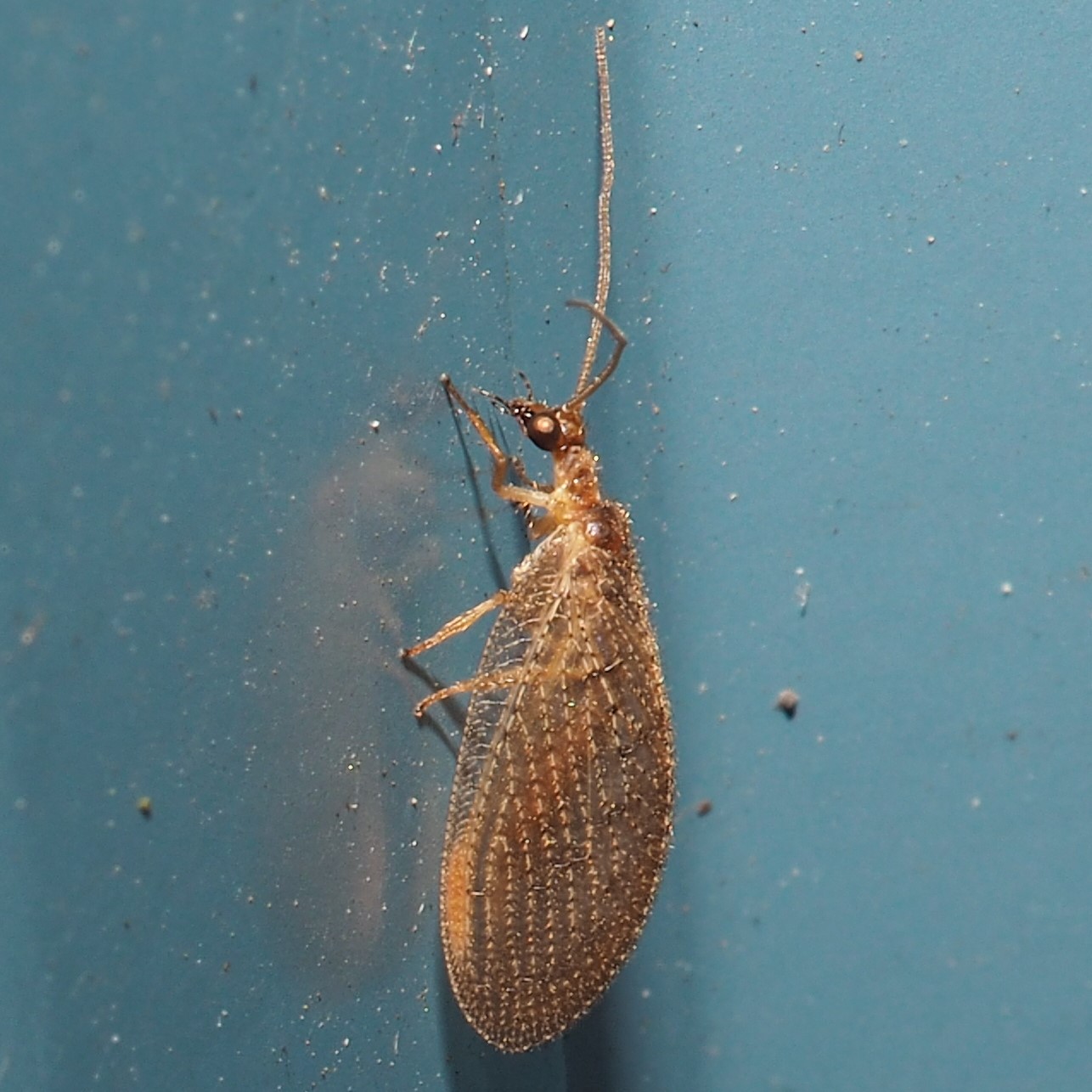
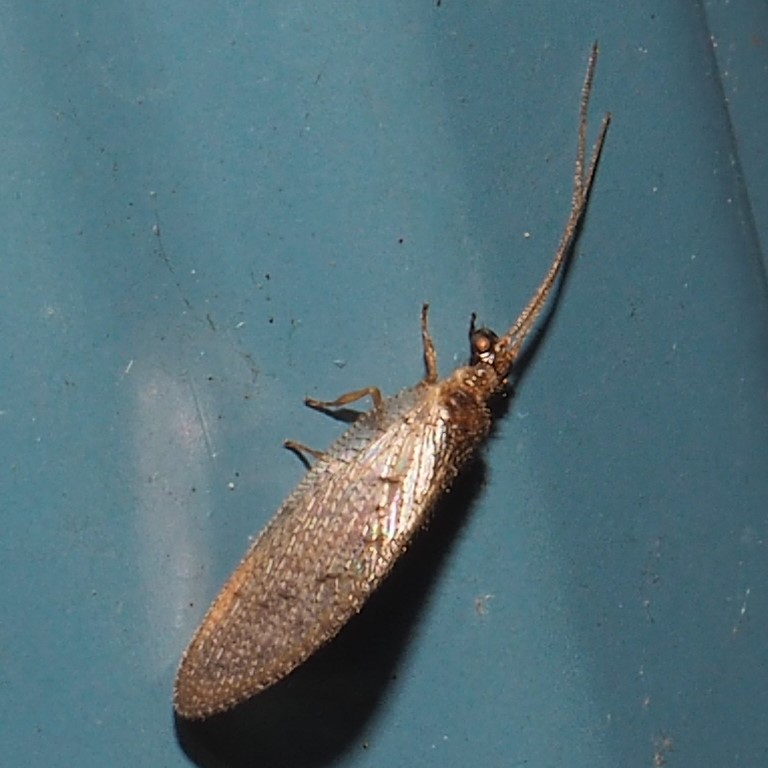
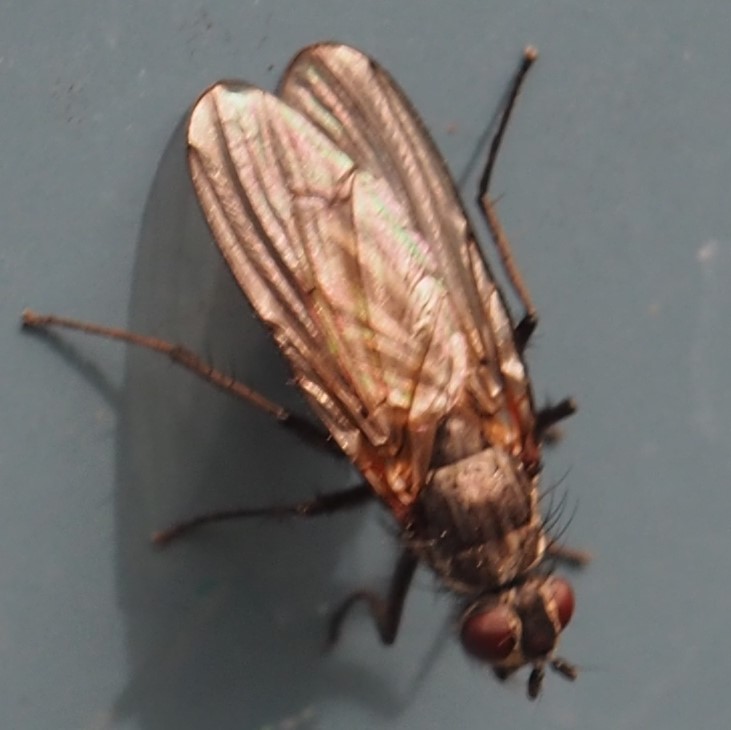
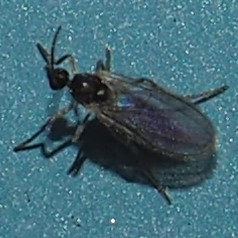
This fly seems very utilitarian - sort of like a sparrow among the "pretty birds". @edanko in iNat id'ed it as a Root-maggot Fly. The next one sounds awful. It's called a Flesh-eating Fly. But it fulfills a very useful purpose - cleaning up someone else's leftovers. The third one is another one that is new to me. I love the sunny golden wings. Oh - and one more interesting little fly. I've no clue what it is yet. I had better put it onto my to-ID list! Oh my. I think I've run out of flies. There are still a few midges, more than a few, but you've probably seen plenty of them for several months. What do you think? Is that ok?
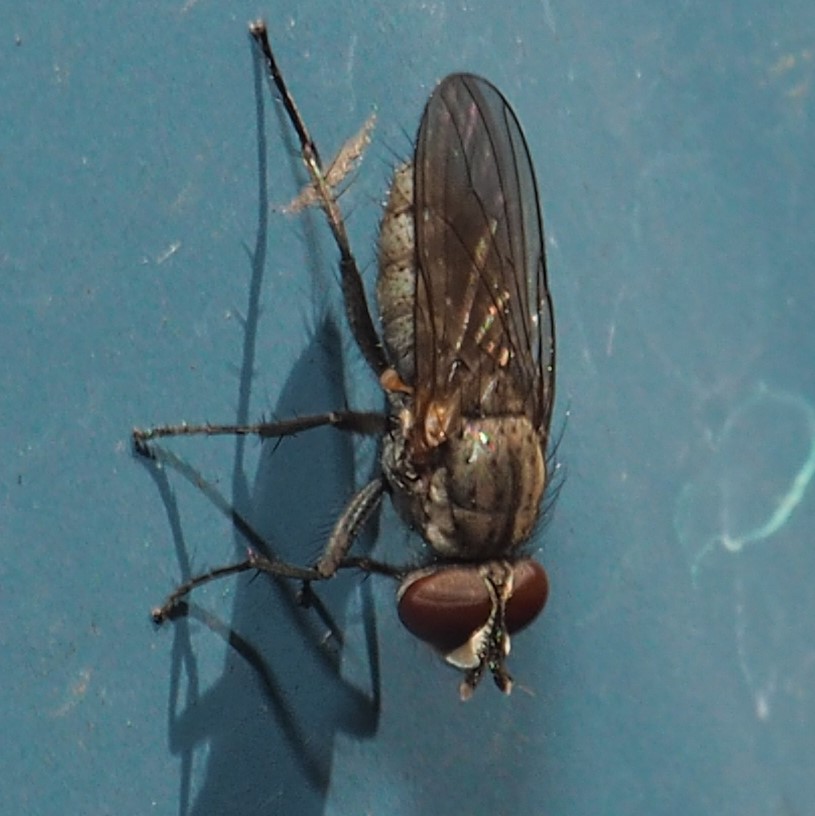

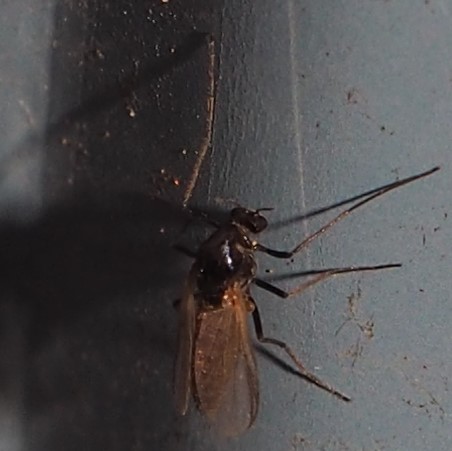
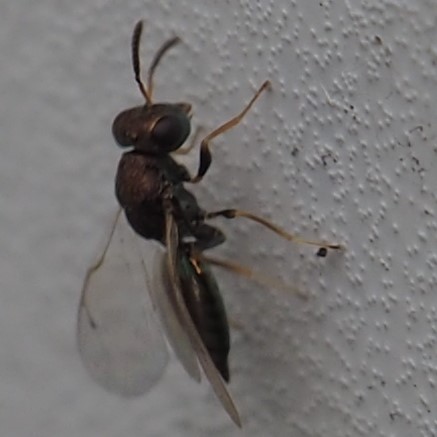
Now - a break for those of you who like the plant shots. Some of us on iNat have been trying to ID this patch from some others. I know there are a couple of varieties (beside the wide-leaved ones) and I think they may well be two different species. The ones (call them the EARLIES) you've been seeing here have had several properties different from the ones that have only just in the past couple of weeks been budding up. First, they begin budding while the leaves, which I didn't rake off in the fall (preferring to keep a layer of natural mulch (maple leaves) on top) are first raked in the spring, are deep orange in color. So two properties: budding time early by a couple or three weeks and color change caused by being under mulch. The third property is visible when the flowers are well-advanced. Property three: They are sort of floppy and don't retain their inverted cone shape. Picture 1 shows the orange leaves of the early variety on March 15 (note: some buds have already started). Picture 2 is a week later and now the early buds are easier to see. In picture 4, the early blooms are sort of "softer" bunches.
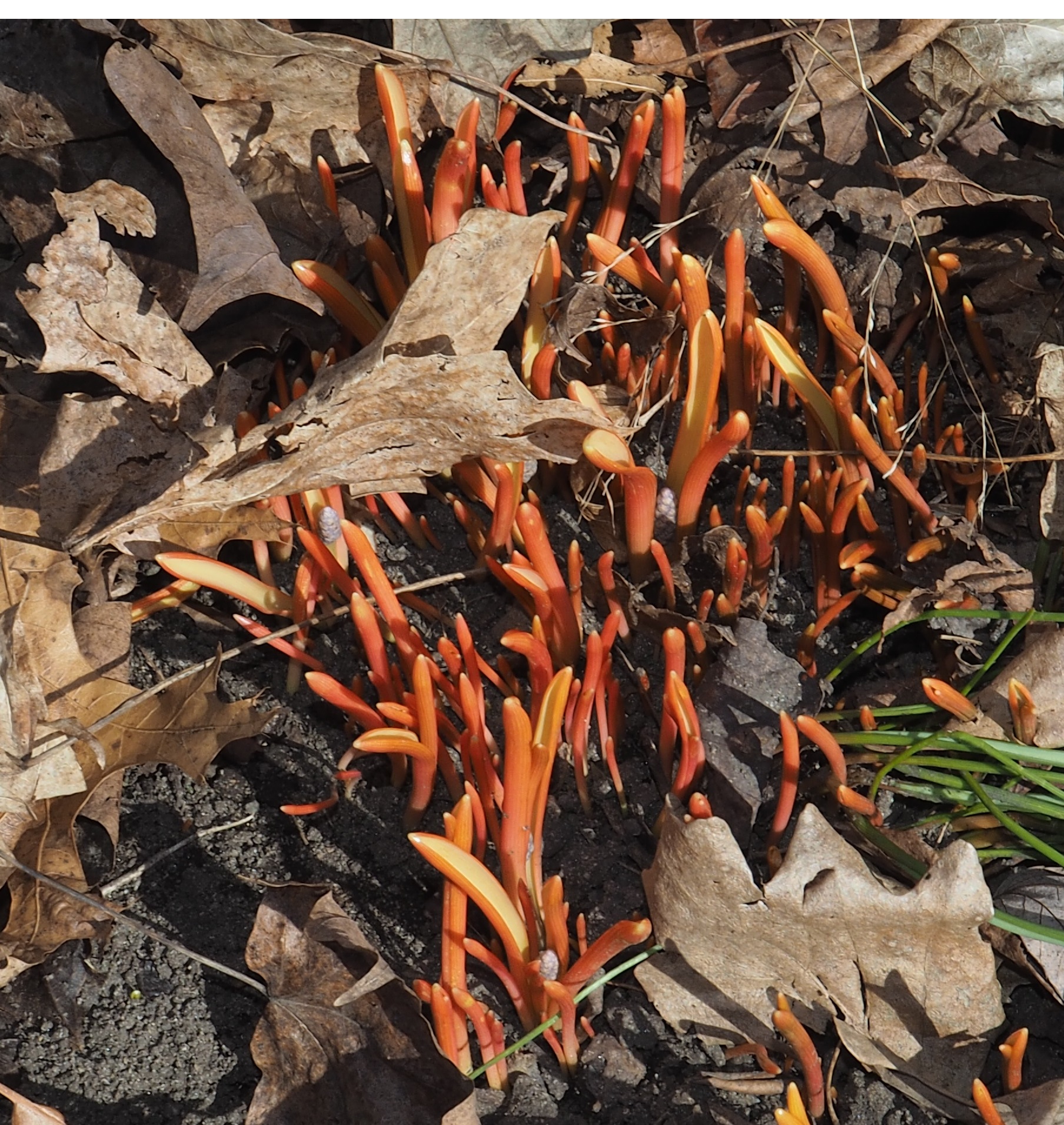
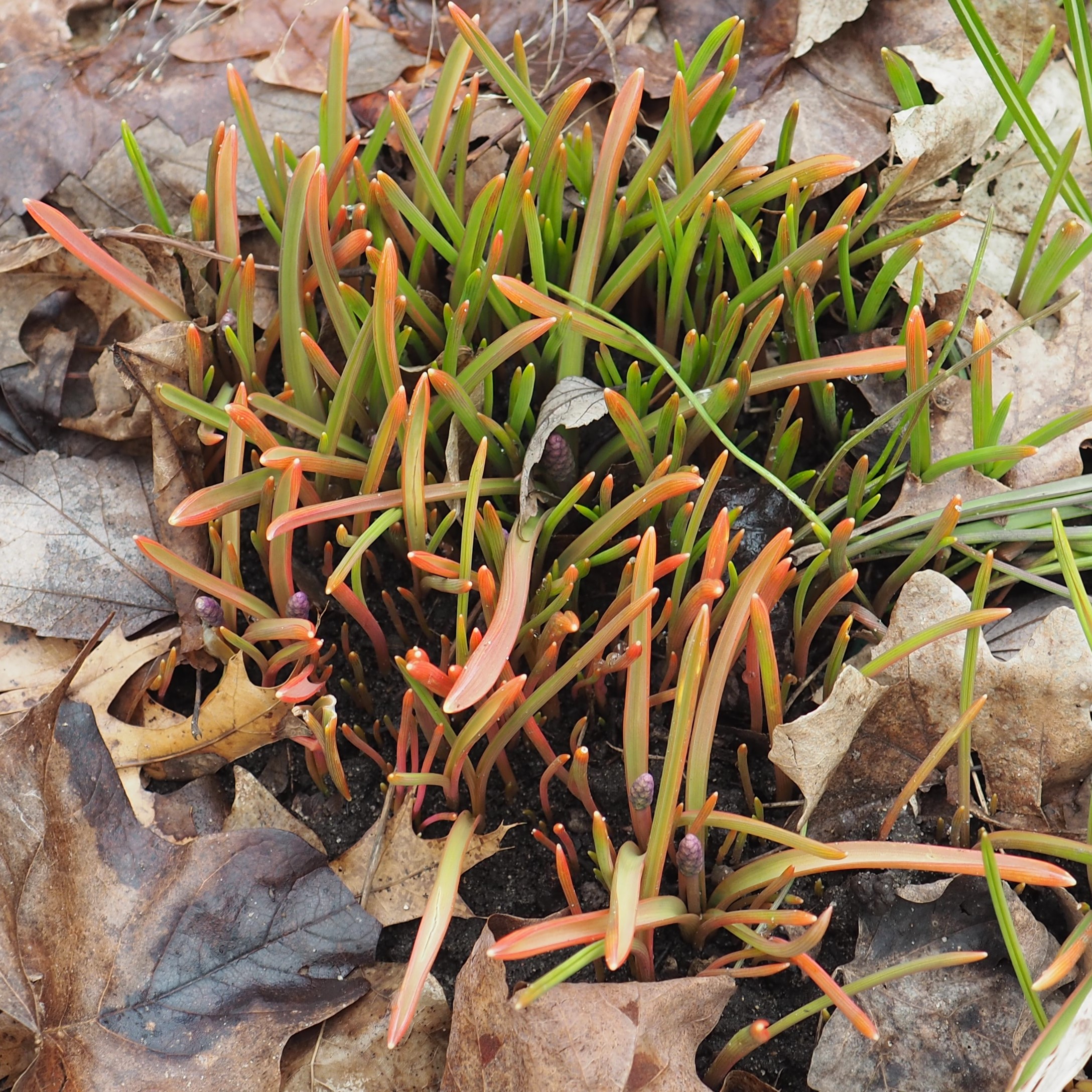
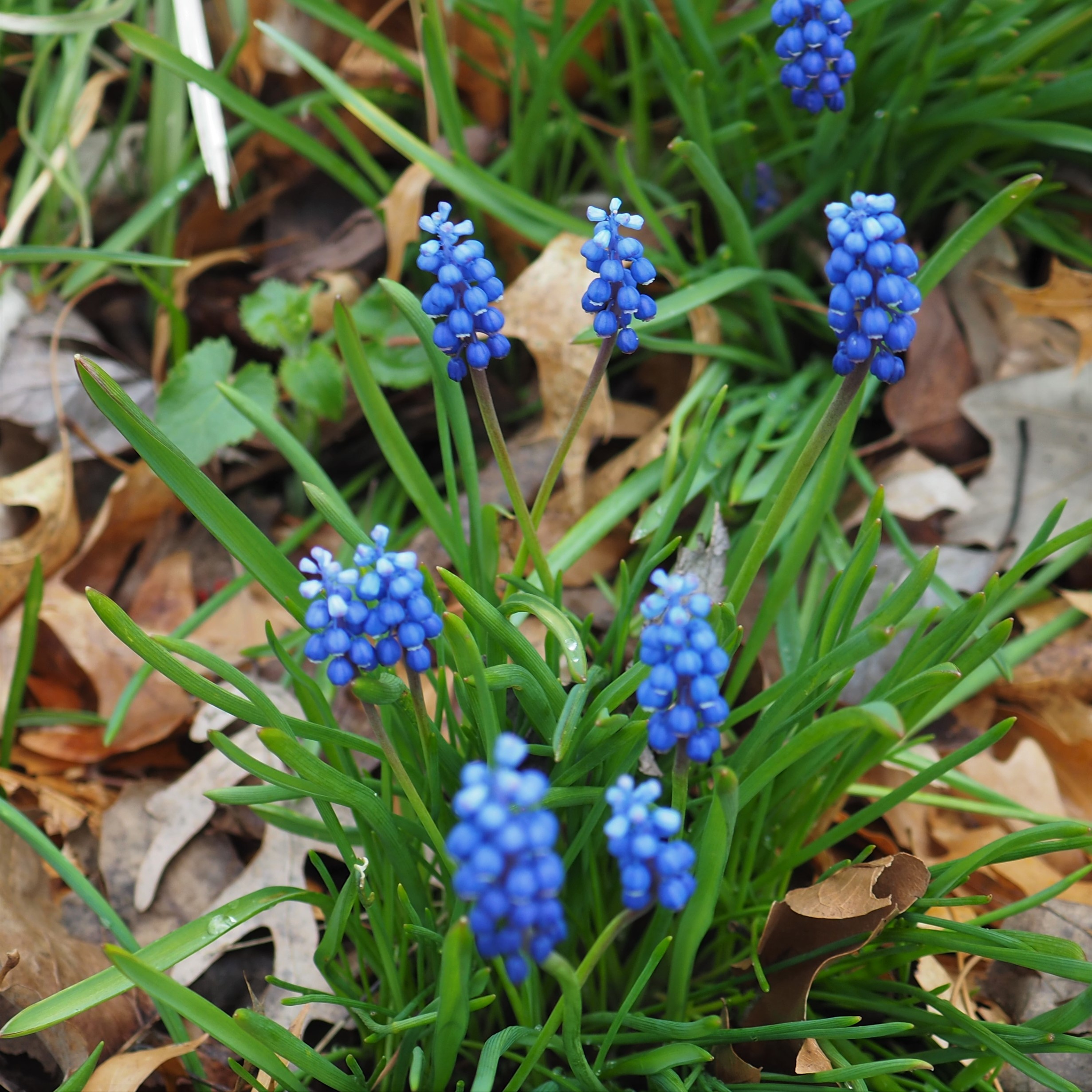
Picture 1 shows the "normal" green leaves of the later variety on March 15. Pictures 2 and 3 show the buds, tight at first but always that inverted cone shape. In one more week, we should be able to see the difference in the mature flowers of both kinds.
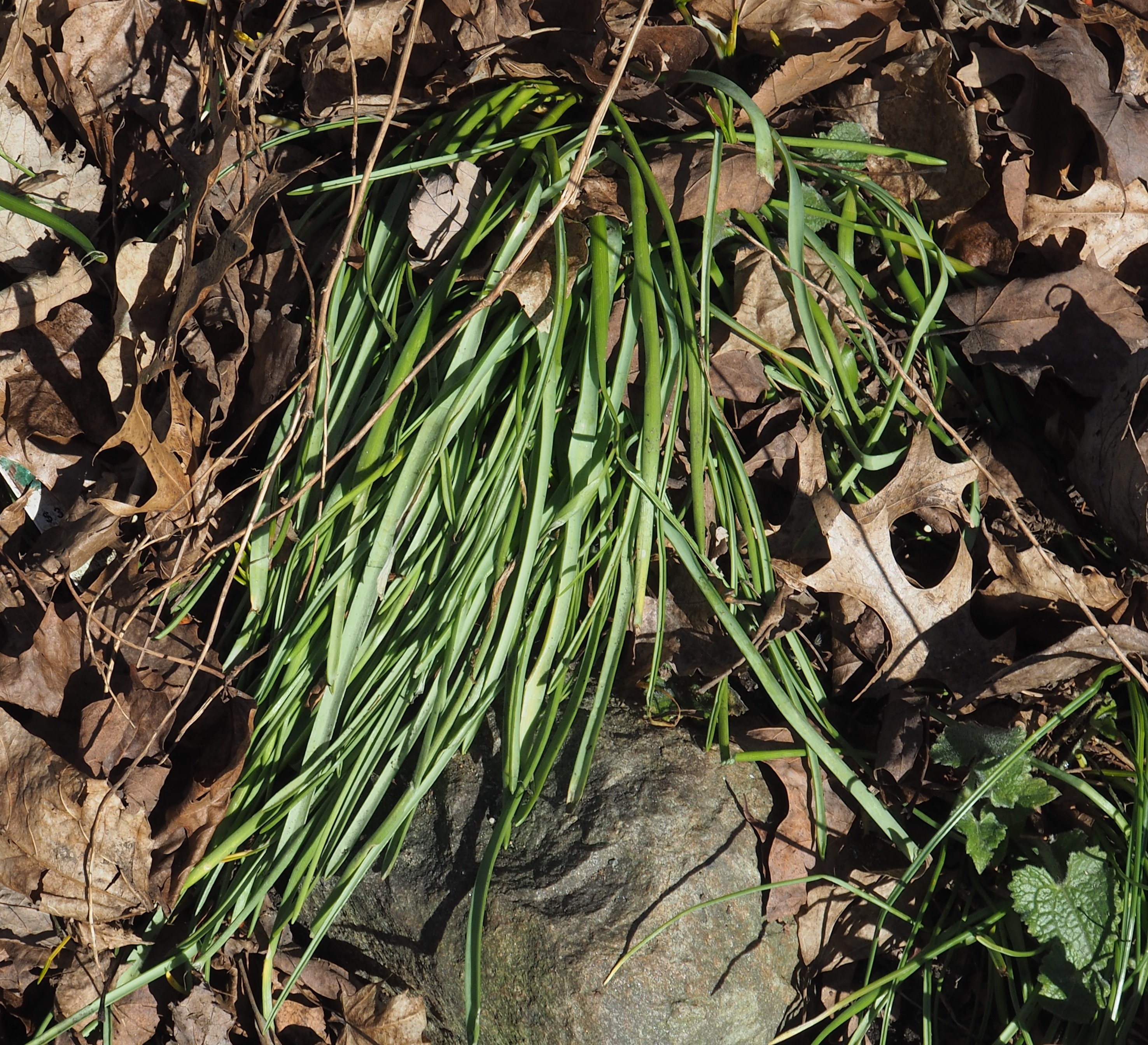

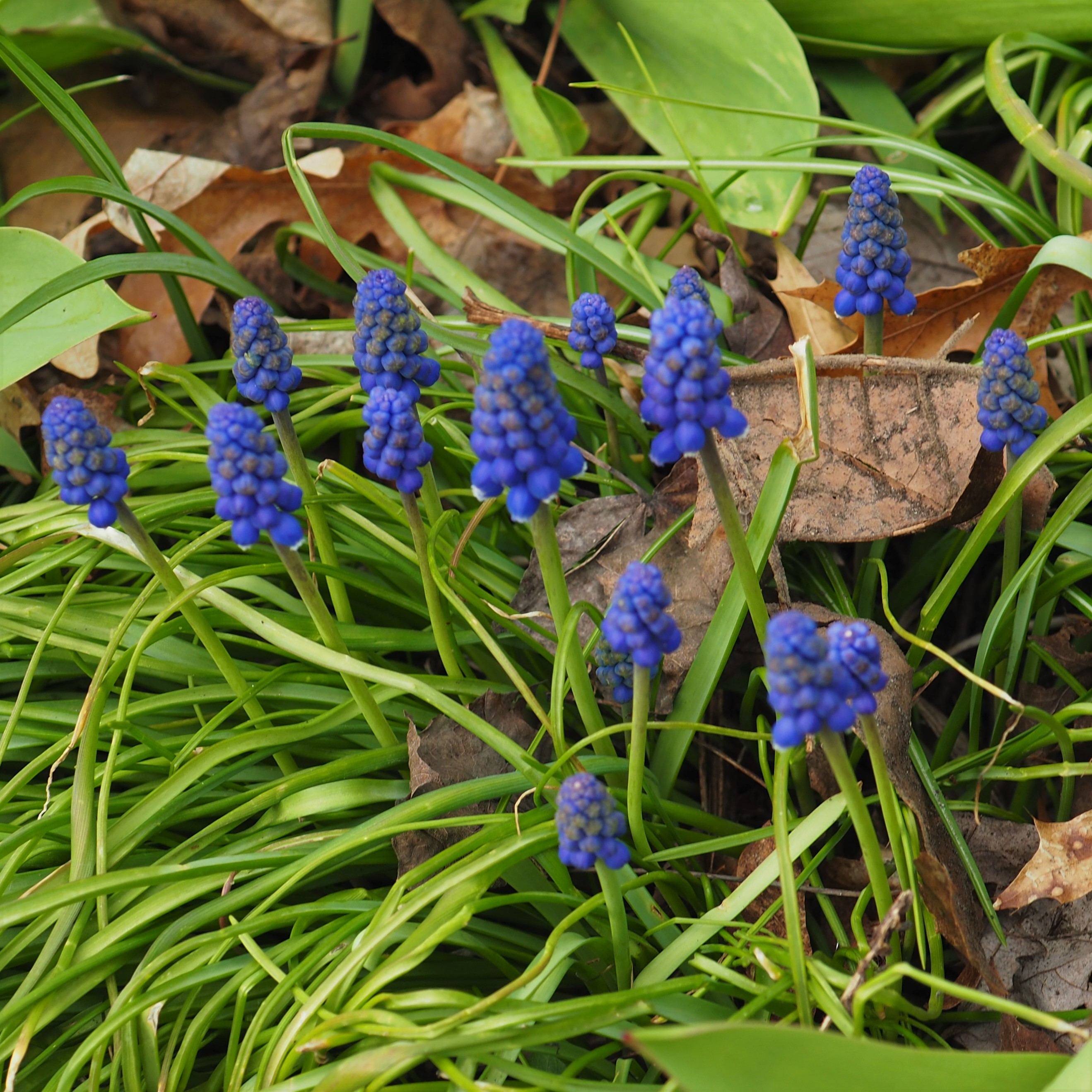
This patch of Wild Geraniums (pictures 1 and 2, a week apart) has been teasing me for a couple of weeks but I still haven't seen a bud anywhere. The Myrtle (Periwinkles) (vinca minor) is hatching its plot to invade more ground. The Celandine Poppies (Golden Wood Poppies) are really getting going.
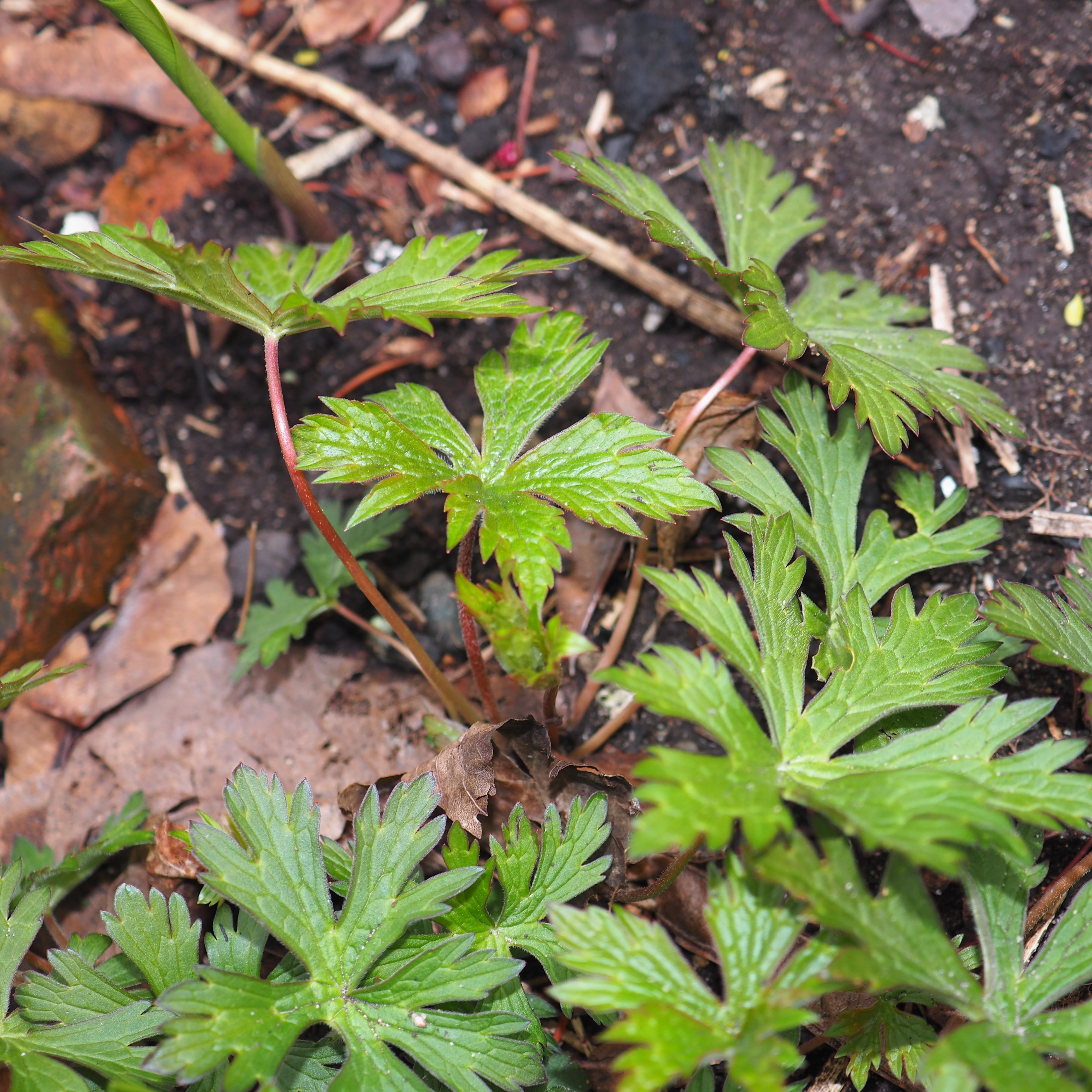

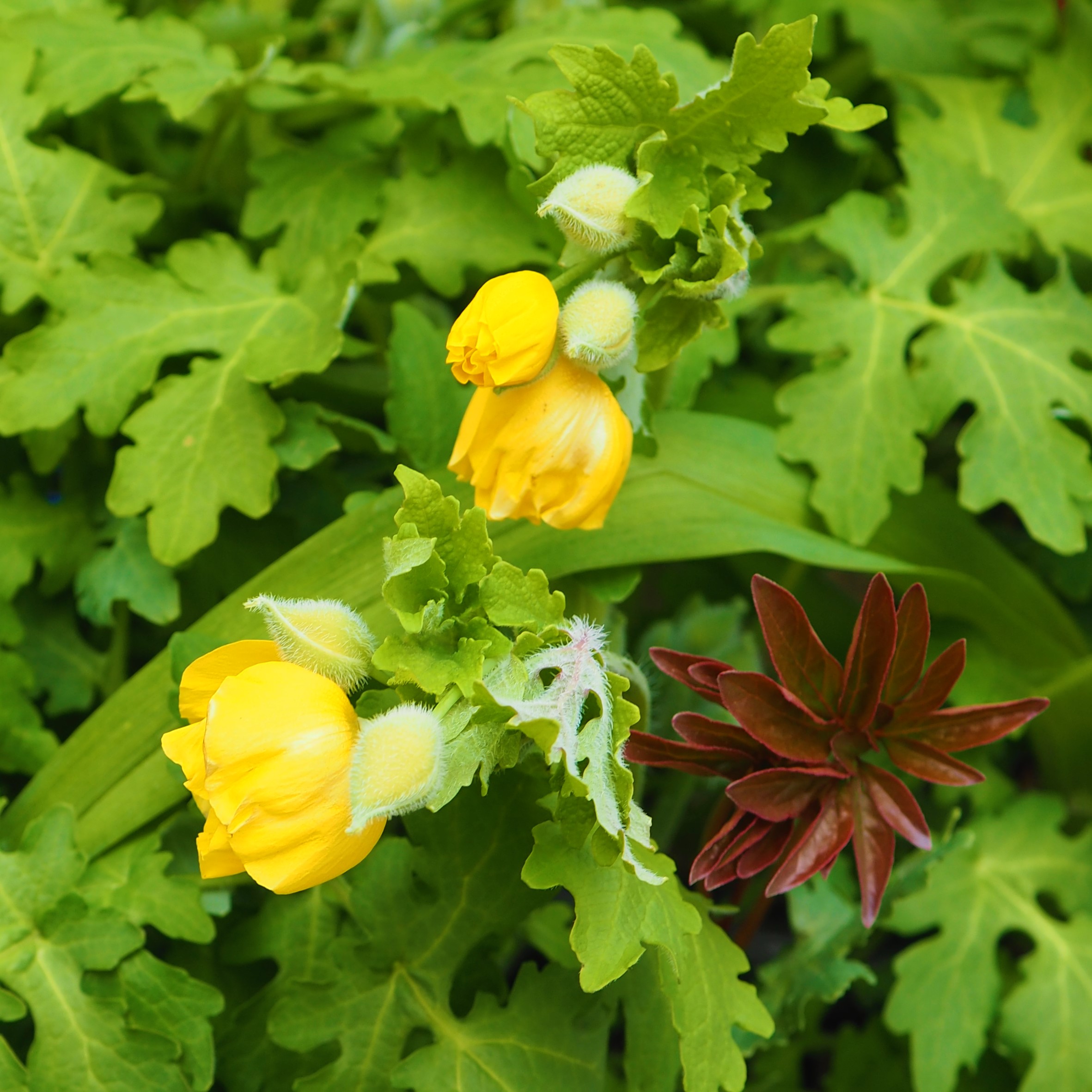
The Sedum Autumn Joy is up; The Raspberry canes have their leaves and I believe a flower bud or two; and the Japonica buds are almost open. I wish I could see that bush when the Orioles come by.
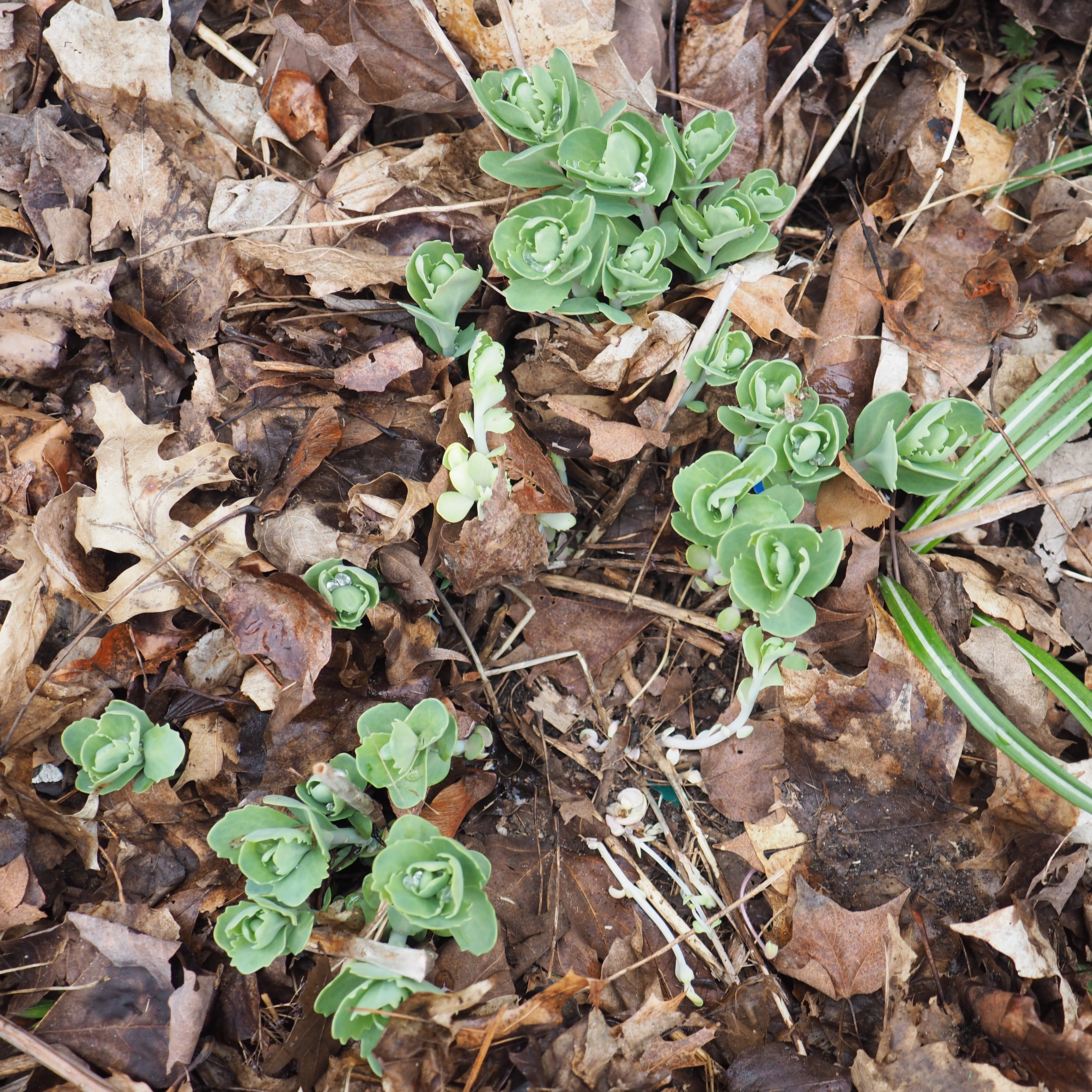
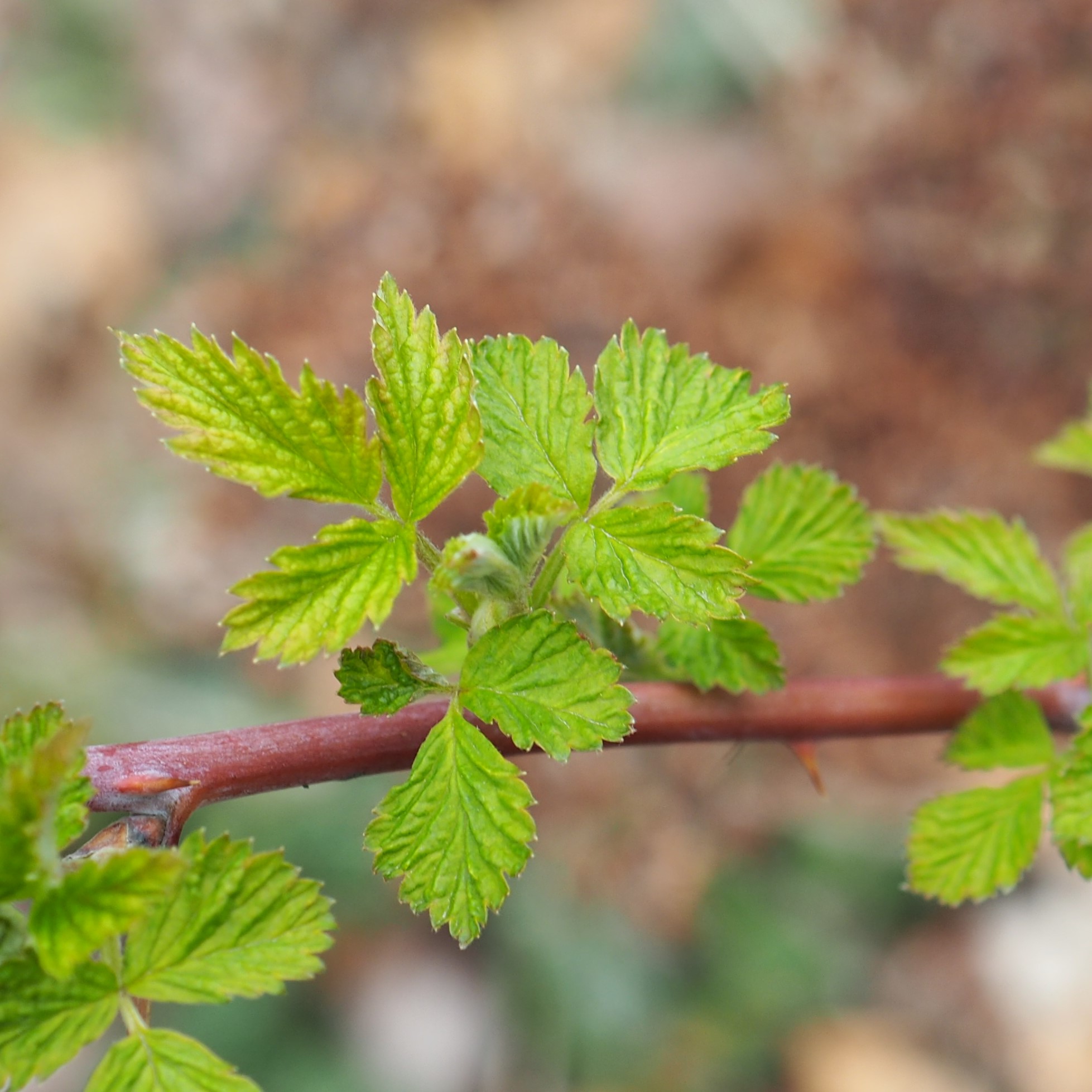
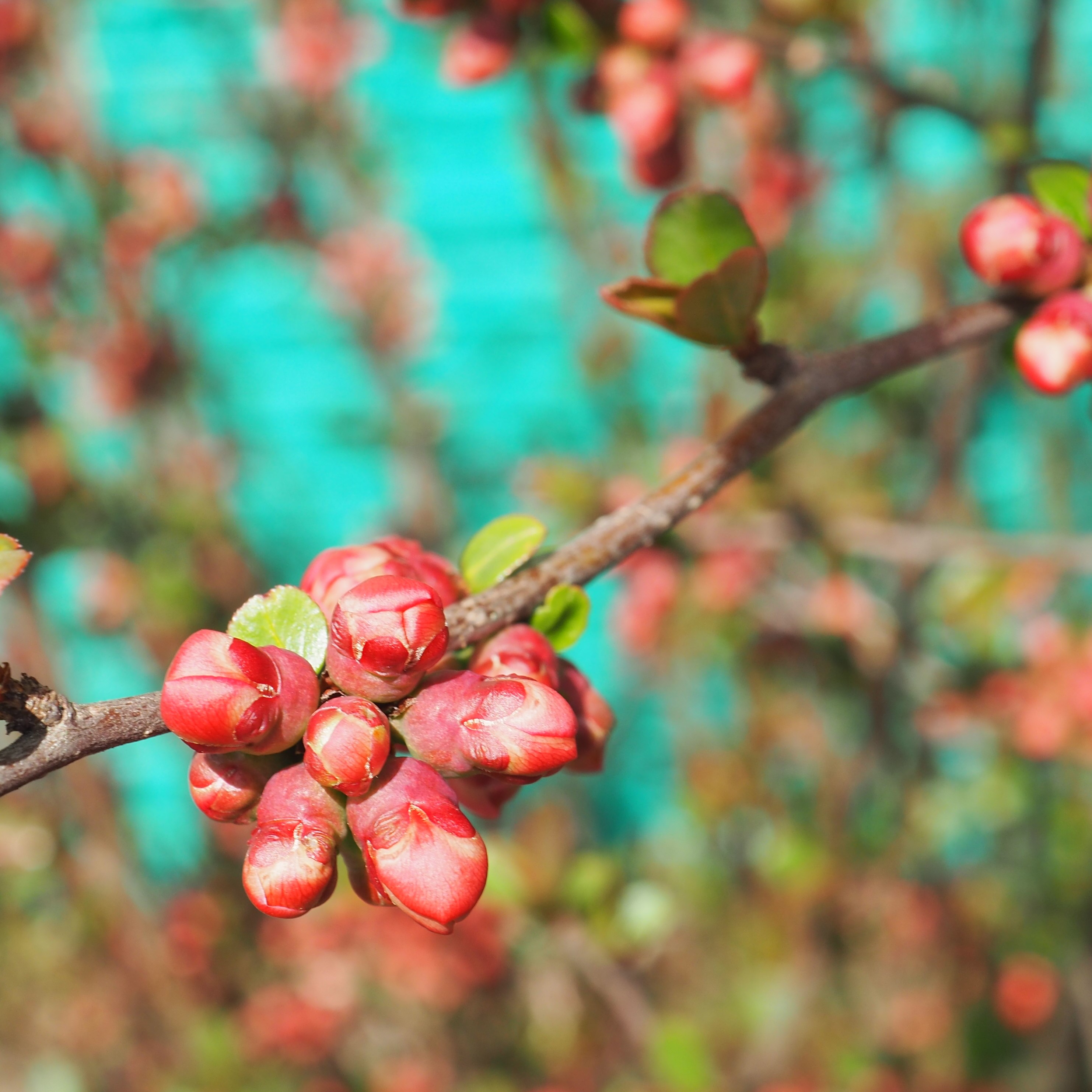
The one Daffodil that bloomed offered itself as a cut flower after a big wind gust. I found out on iNat that this "purple" Hellebore is The Lenten Rose. Makes sense since it has always been more rosy pink. Last, the Virginia Bluebells are starting to bloom.
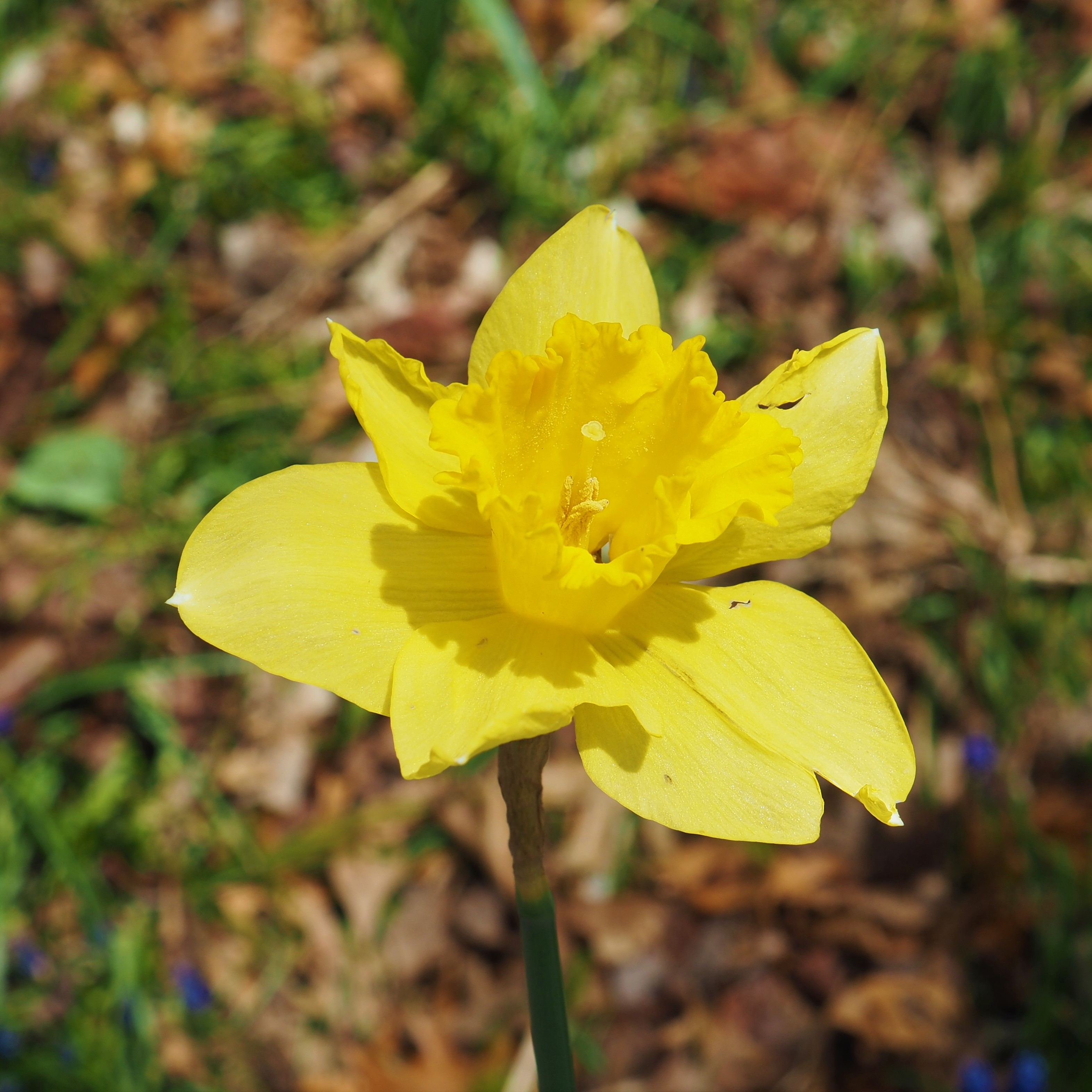
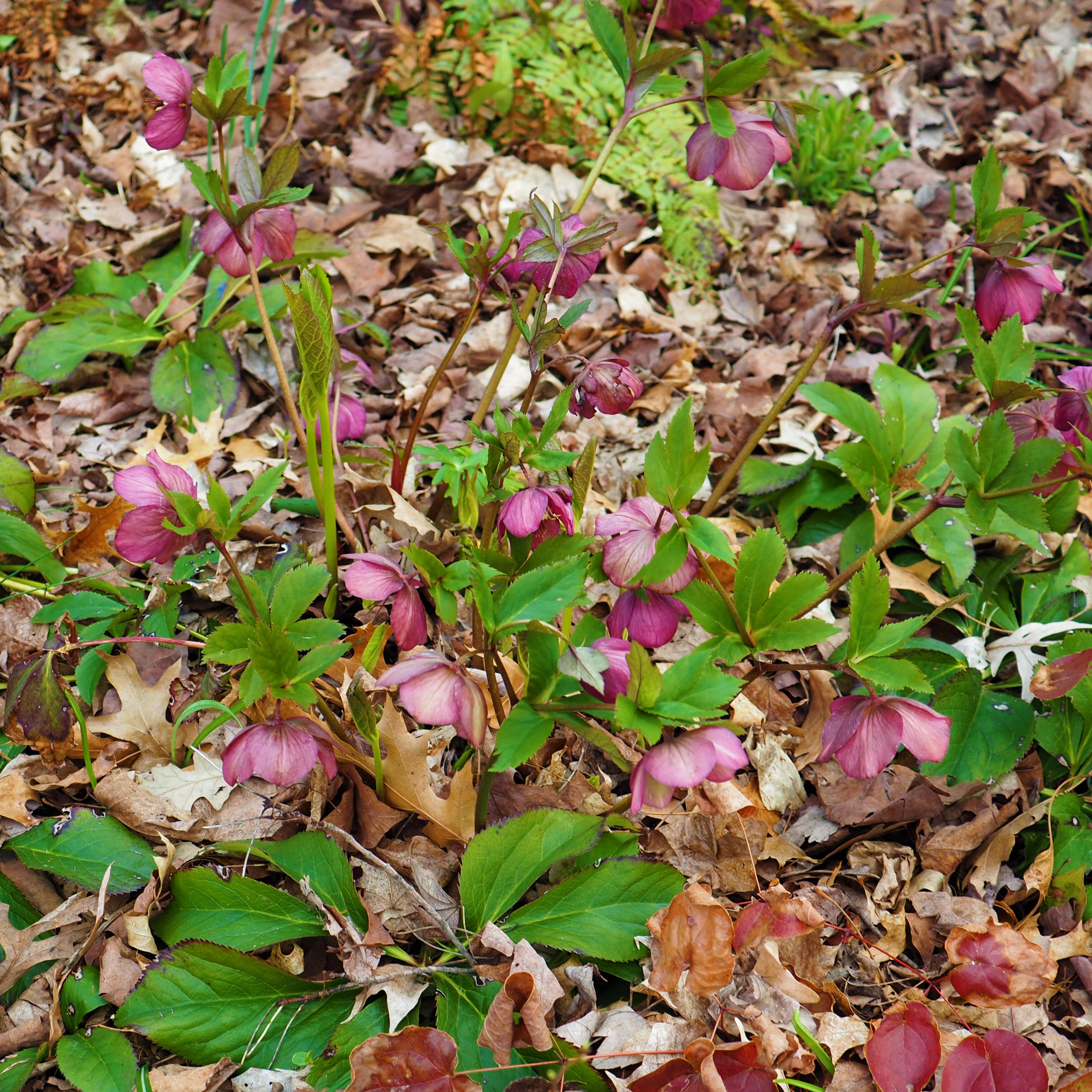
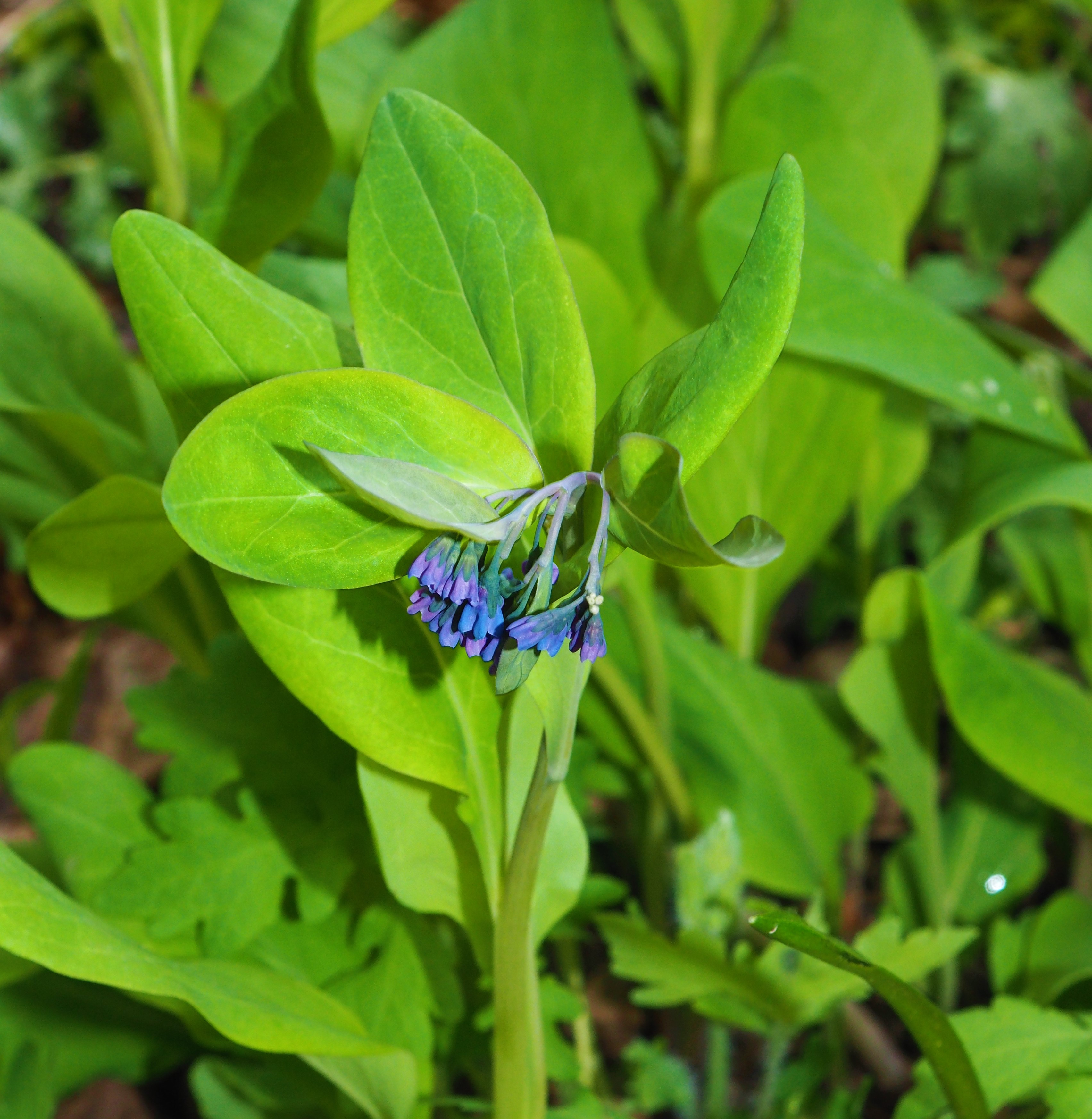
Way back in the yard is an ancient Forsythia shrub. This is about as much as it ever blooms. It gets some sun nowadays but soon it will have said goodbye to the sun, due to the thick Norway Maples. In the front, the tulips are almost blooming, but they wanted to hold out till next week.
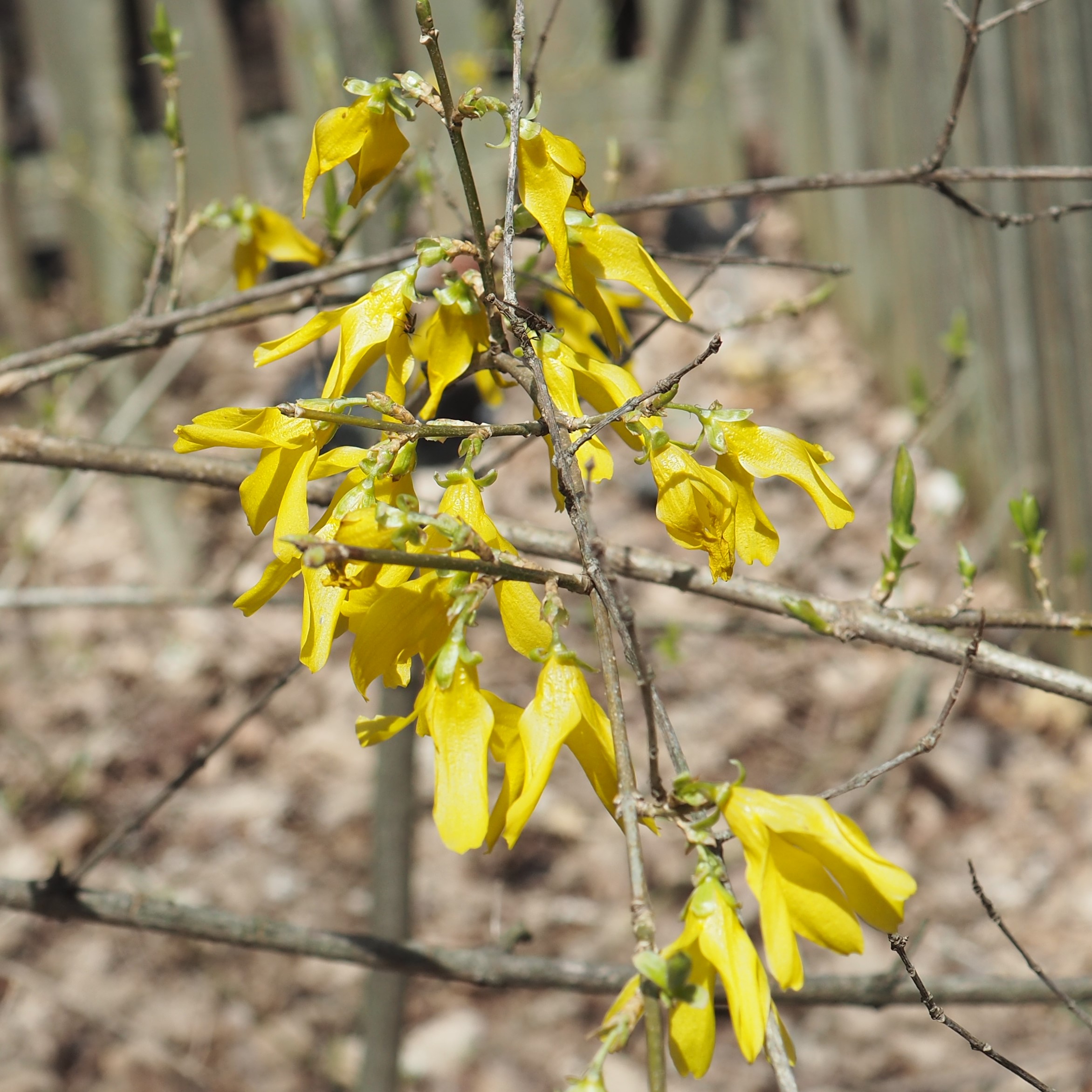
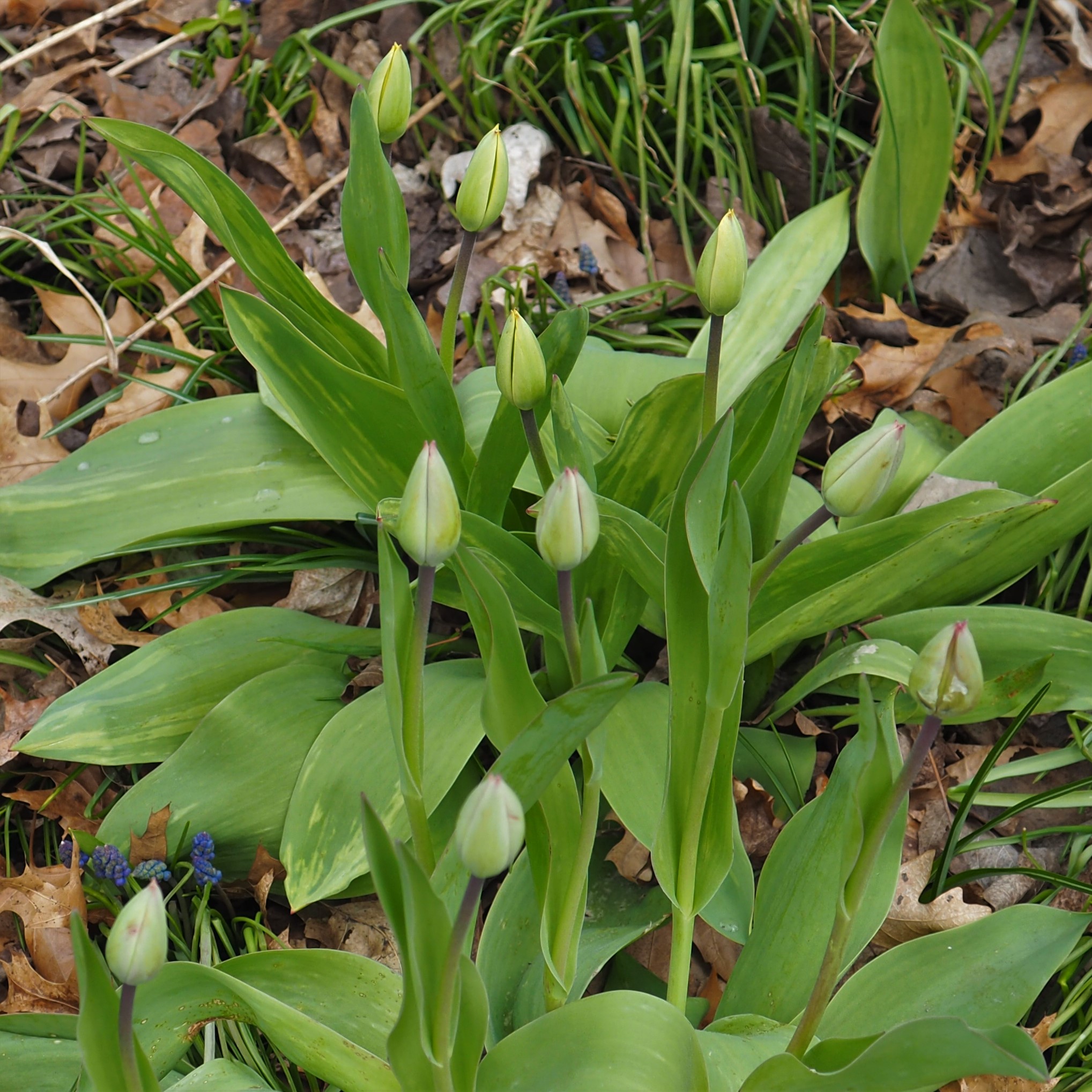

Now, for you pink and blue lovers, the pink and blue tour. I hope you're not tired of the endless tiny vignettes of Pink Hyacinth and Pulmonaria. Those two flowers in addition to the lush white-spotted green leaves are a colorist's delight.
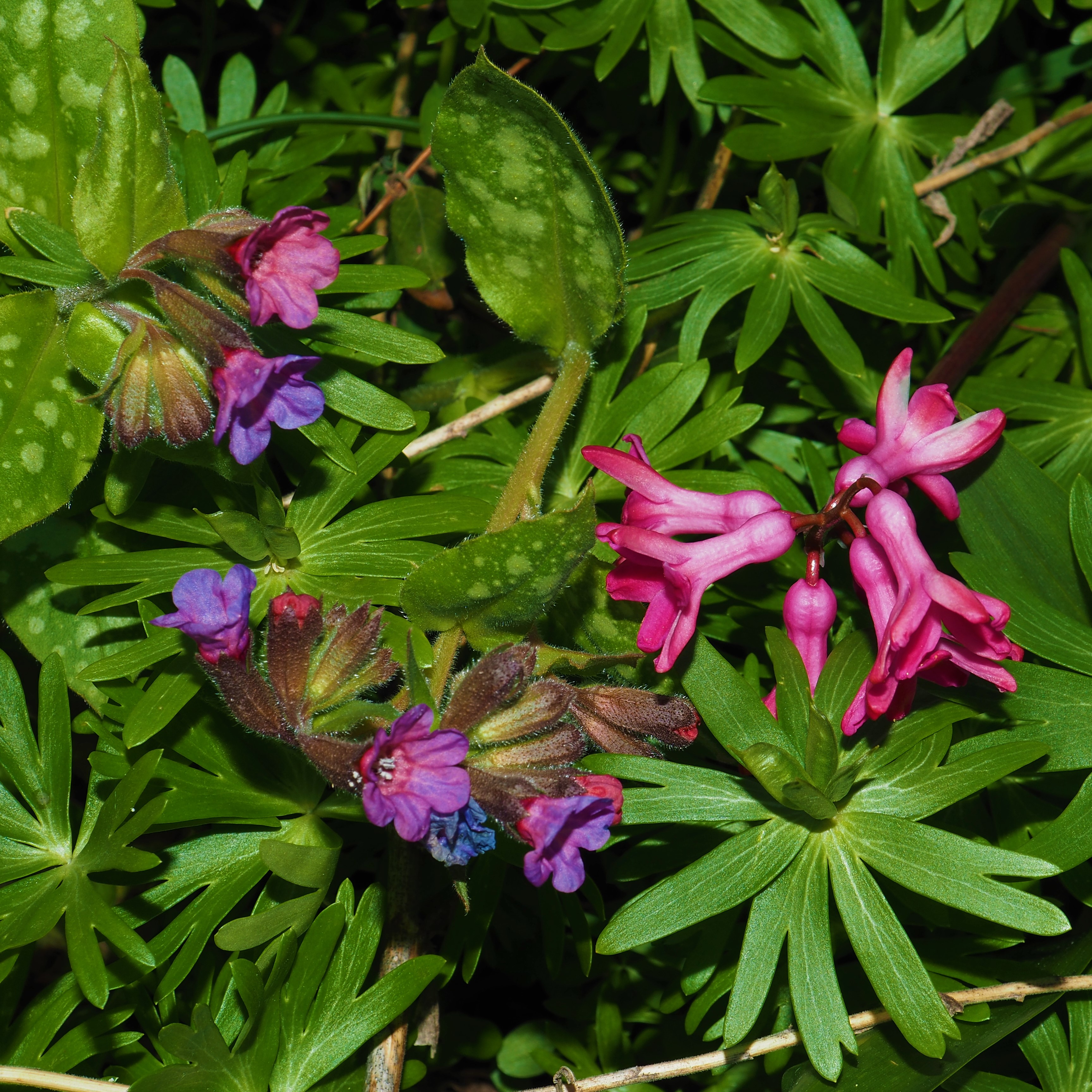
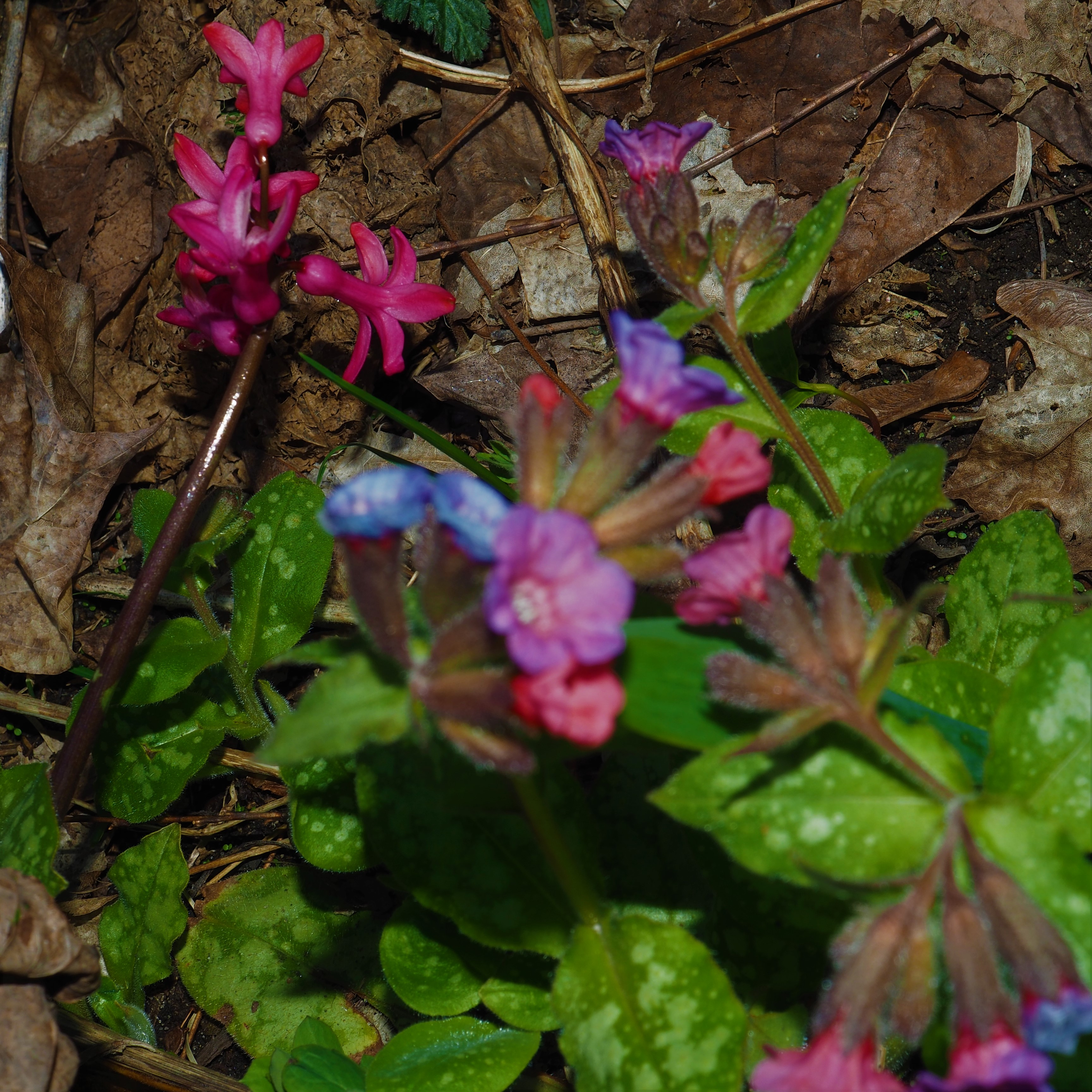
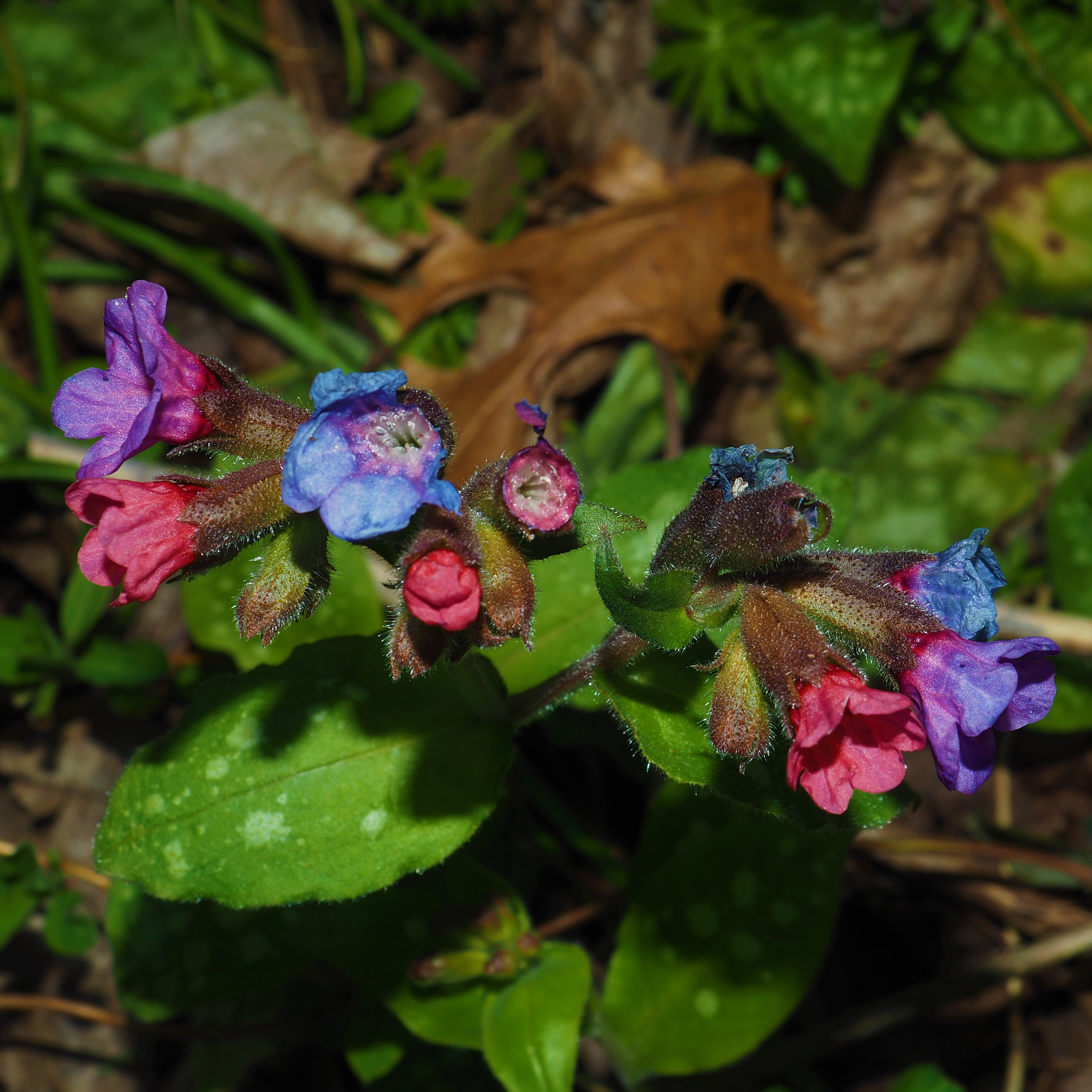
The Primroses are budding up. The Mauve one in the back yard is one of the oldest ones I still have. Next is a brighter pink one from the front yard. And another.
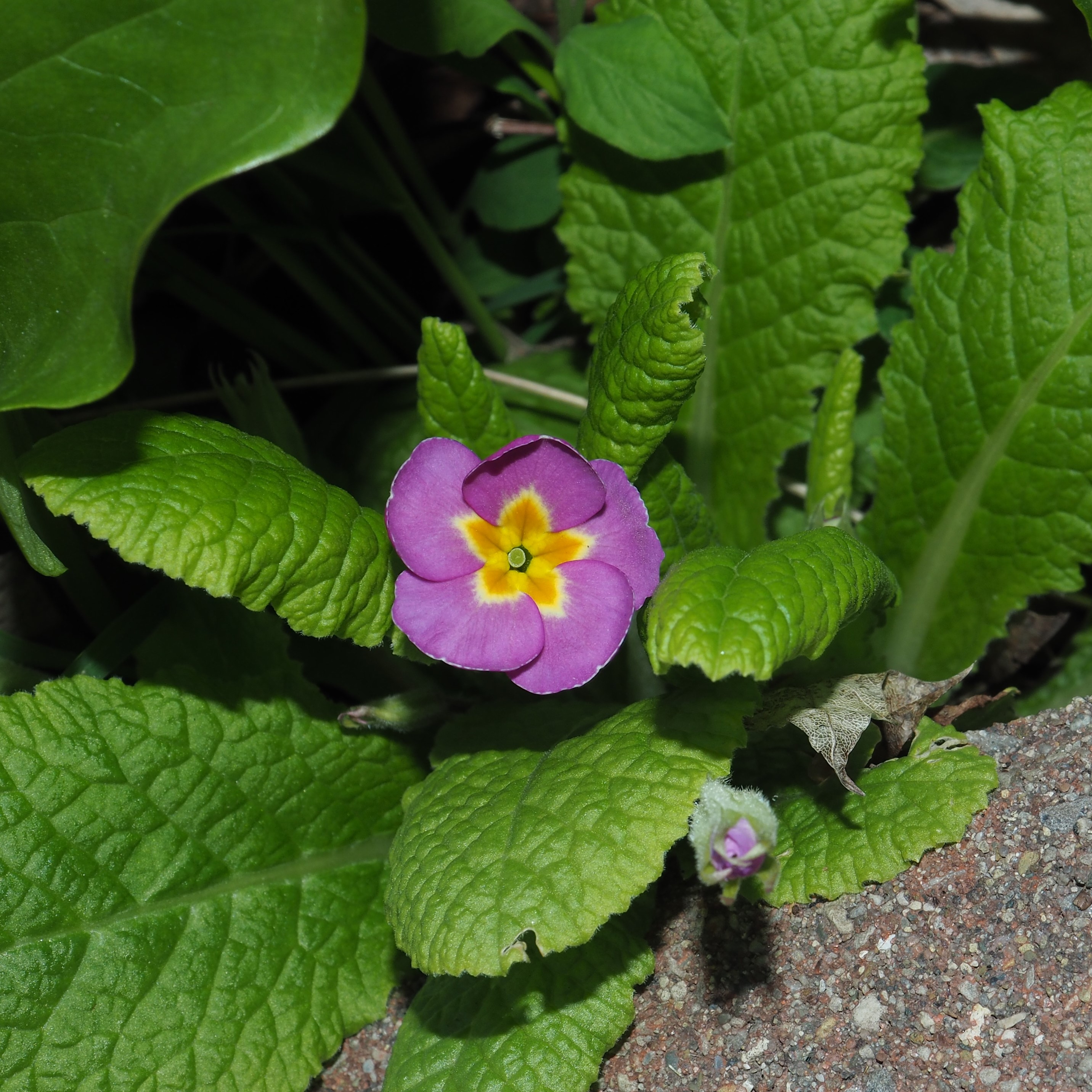
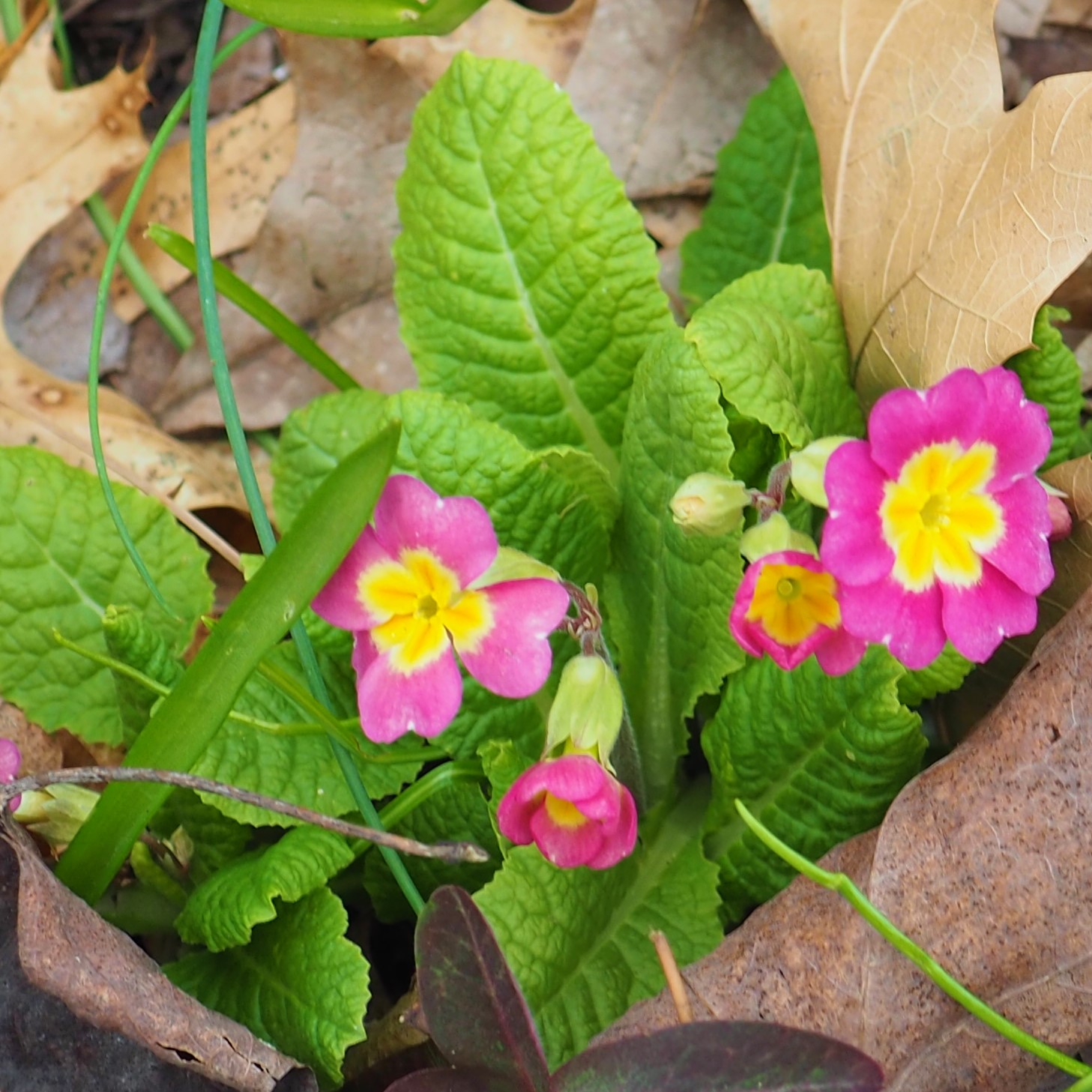
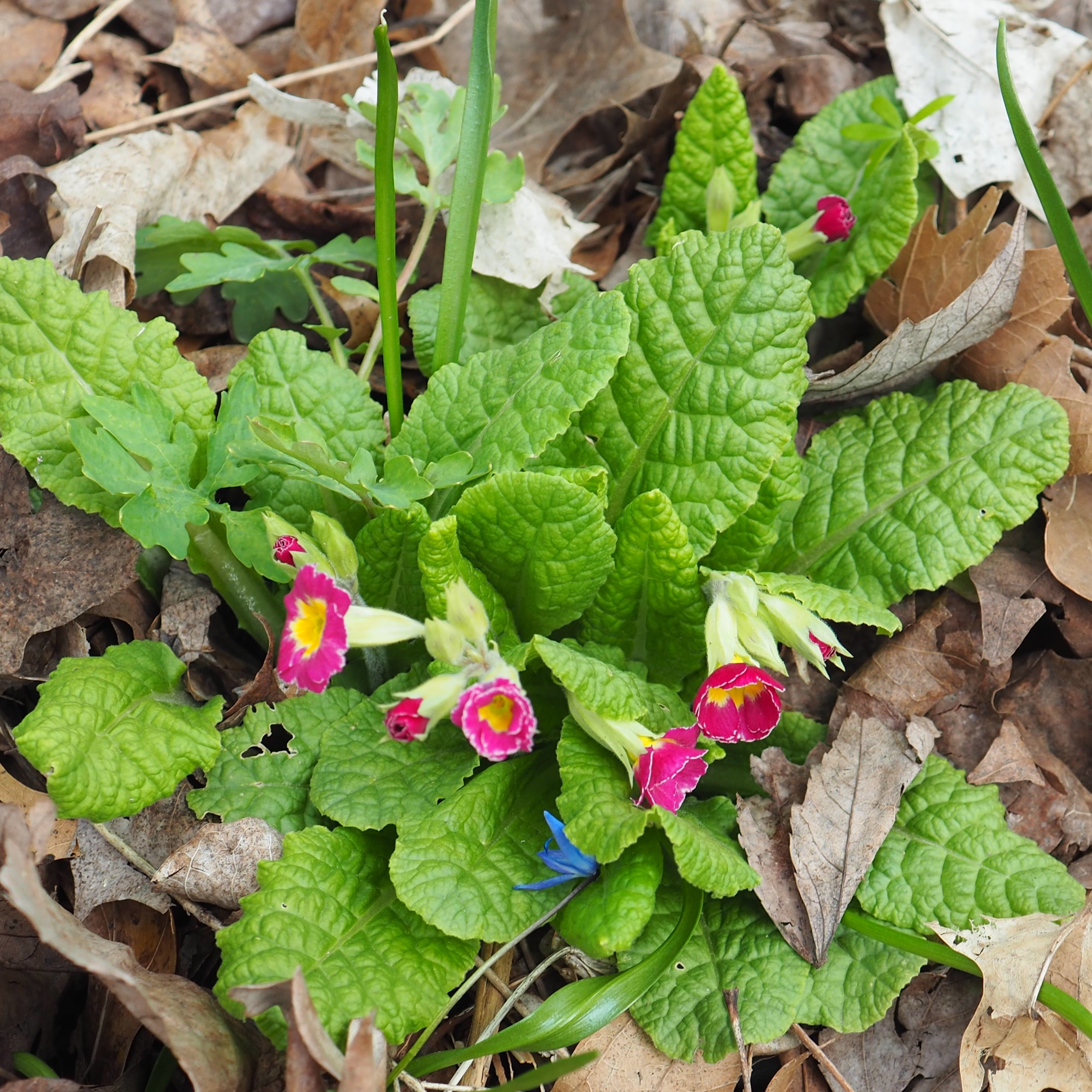
Finally - the Spiders! I haven't seen this little Asiatic Wall Jumping Spider (Attulus fasciger) for a while. So to find out that it used to be the Asian Wall Jumping Spider, and under a different scientific name too, was pretty easy to miss.
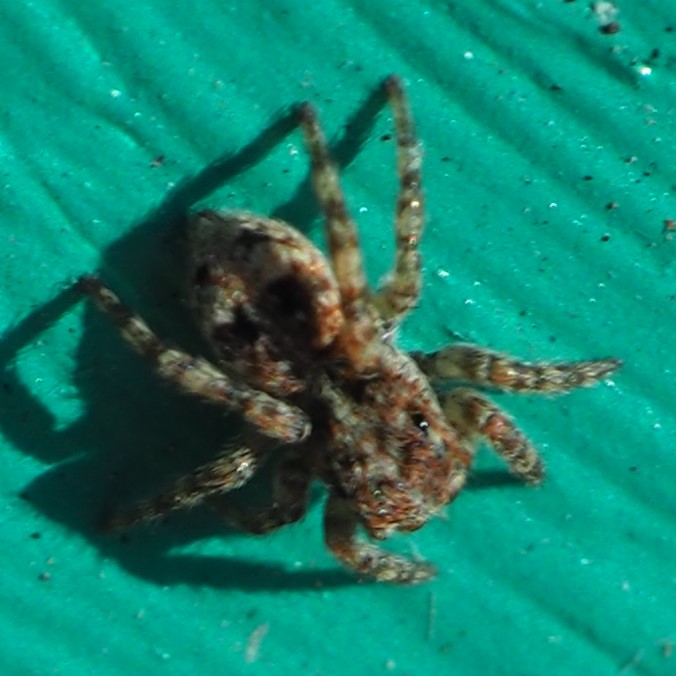
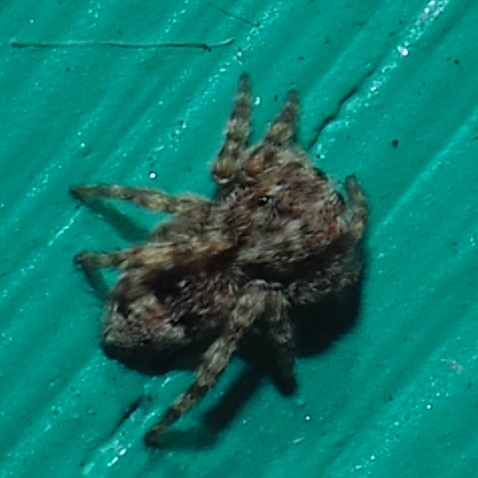
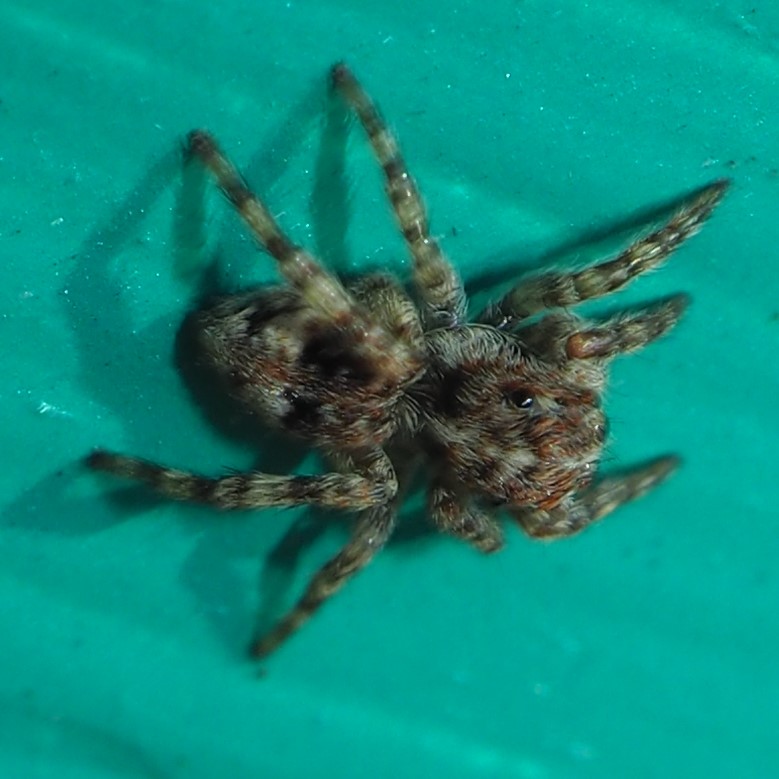
This Cobweb Spider is the Common House Spider. Next are a couple of other mystery Cobwebbers.
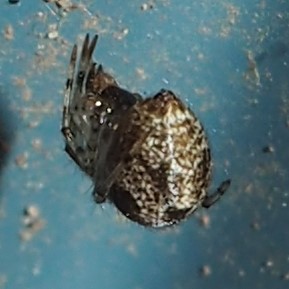
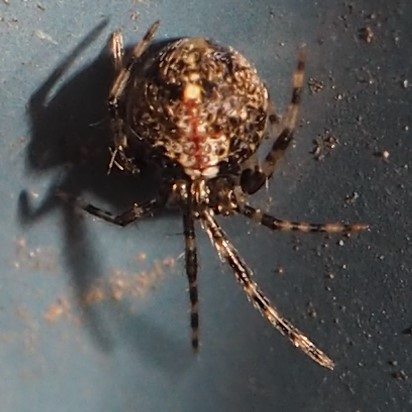
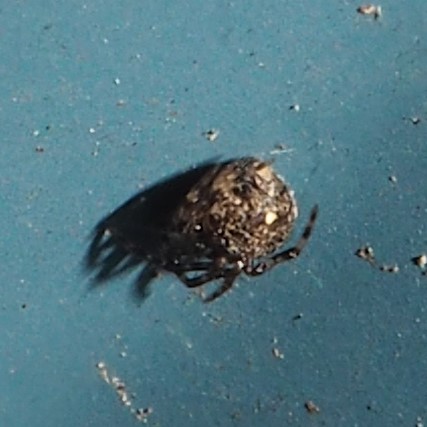
Here's one that I thought was a Cellar Spider because of its position up under a window ledge, but Matt convinced me finally that it is actually what it looks like- a little Running Crab Spider. It probably should have avoided that spot as you will see. Next is another fluffier more Teddy Bearish Running Crabber. Third isn't, but it will soon have an encounter with that first Running Crab. It turns out to be the case for a just-about-to-hatch Horned Parasitic Cobweaver. Look at the little leg-shaped protuberances!
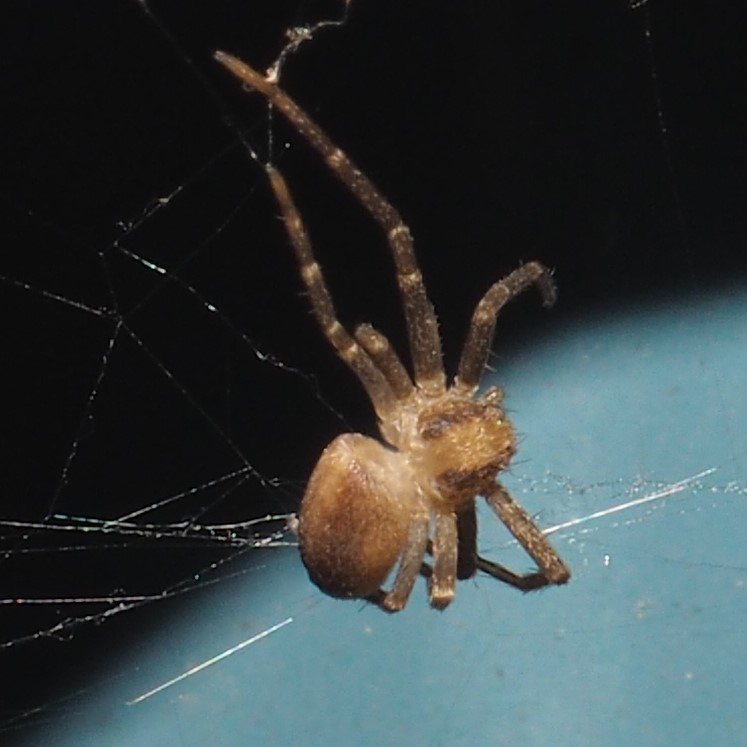
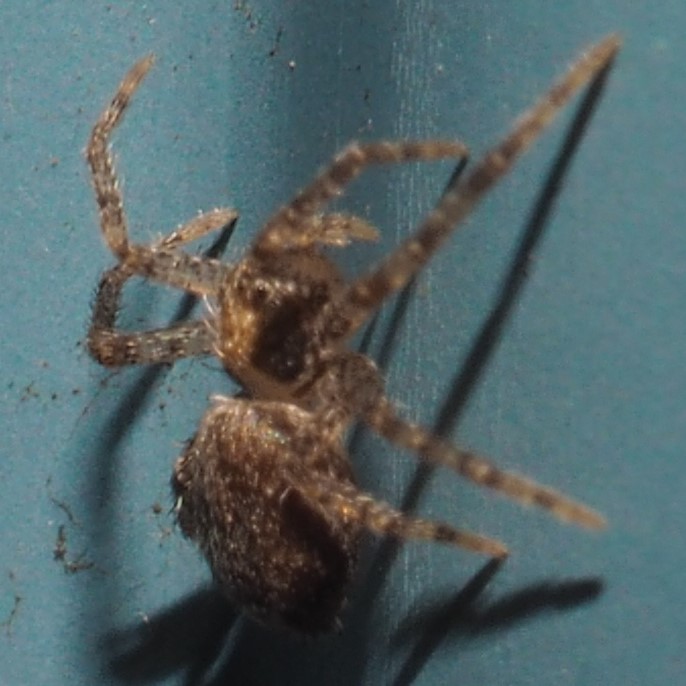
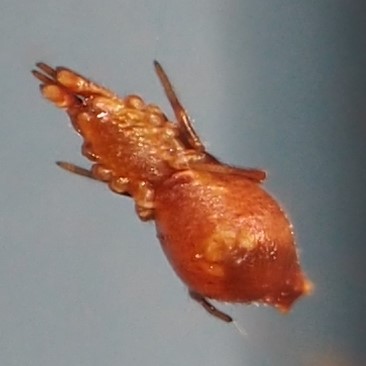
A couple of hours later, that weird case was gone, and replaced by a tetrahedron-shaped thing that I finally recognized as the folded-up version of the Horned Parasitic Cobweaver. And a few more hours later, it was found up on the window frame near the Running Crab. If you look closely, there is a goodly quantity of silk around the Crab. Oops. After a while, the dinner secure, the HPC rested up.
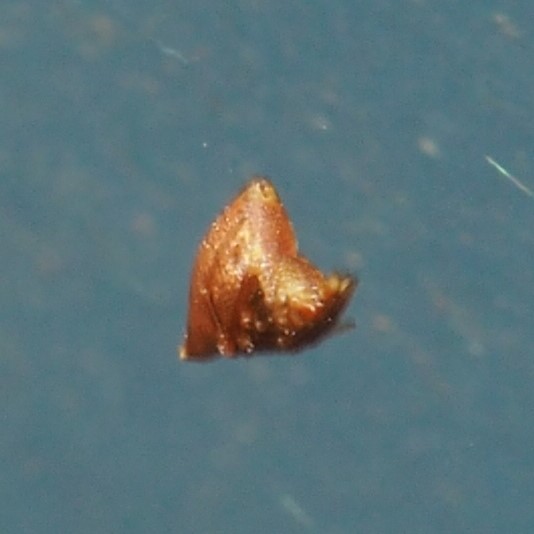
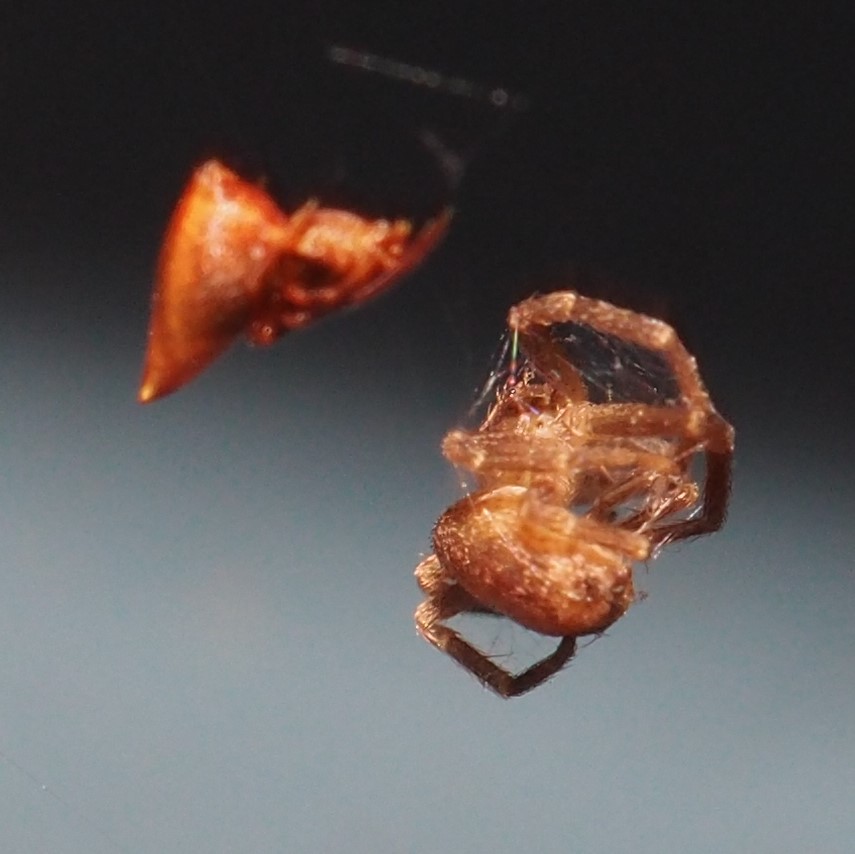
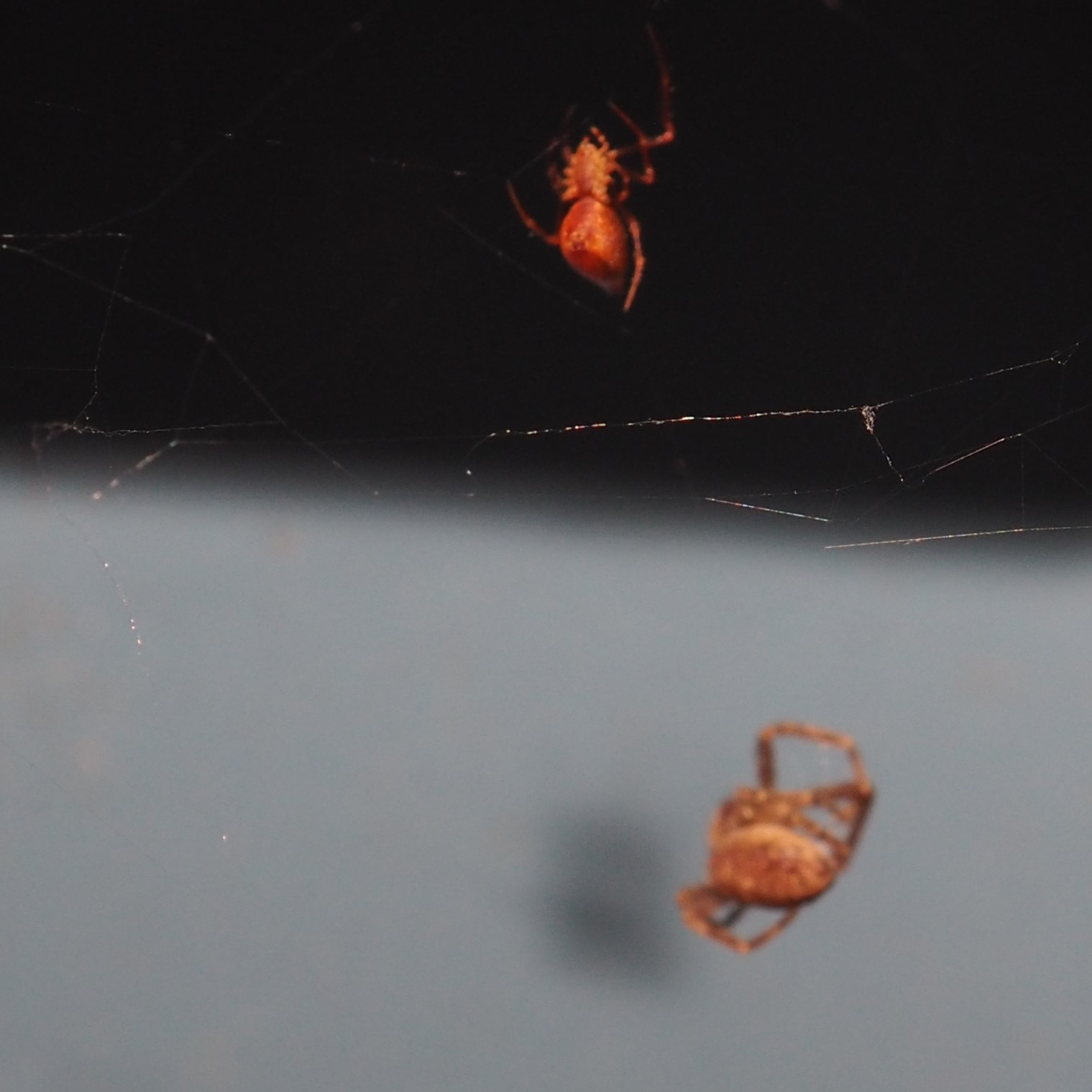
Just a few more and you can look again.
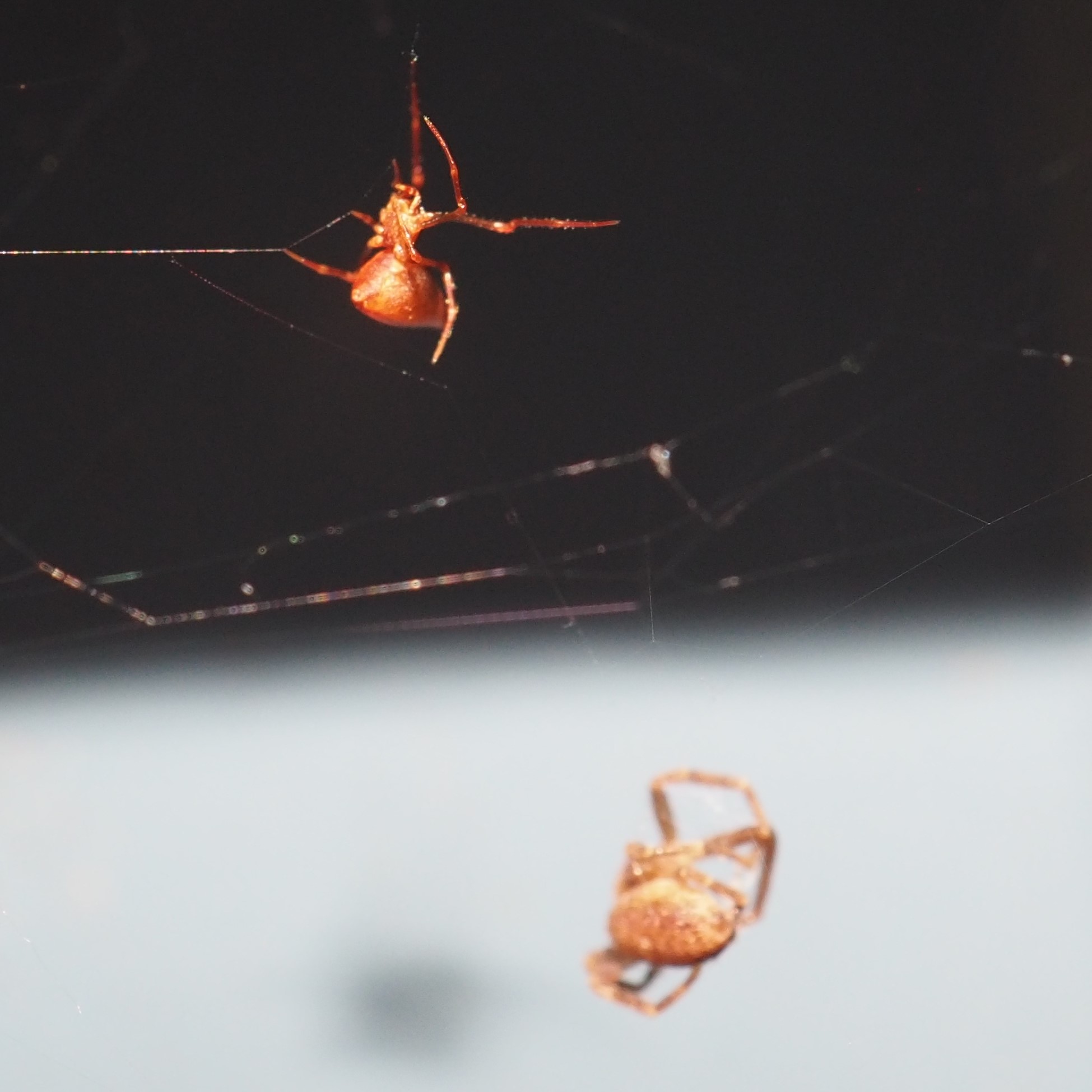
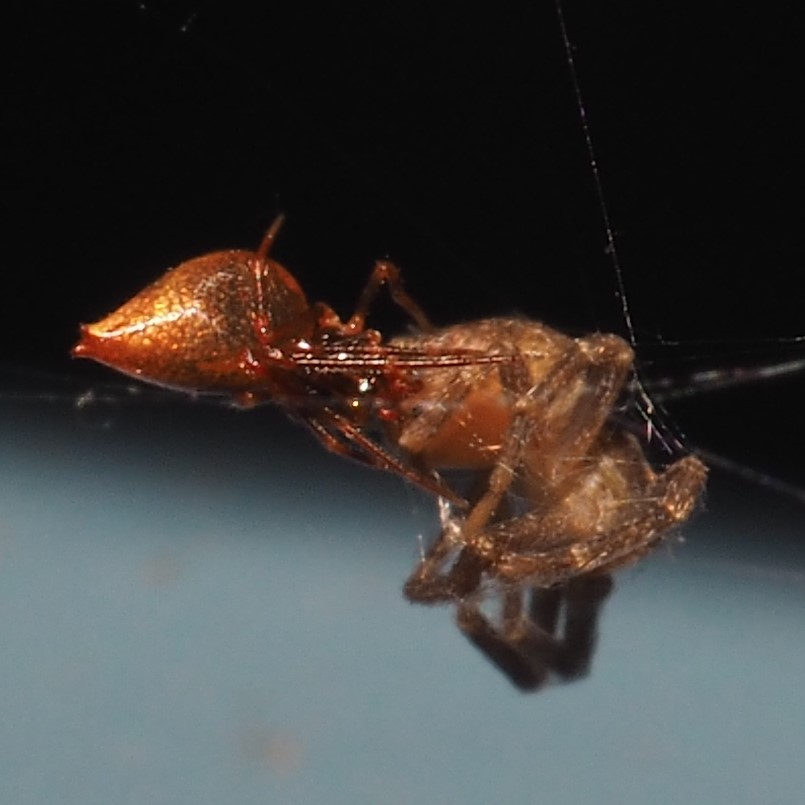
Oh - do you remember the Dimorphic Jumping Spider from April 2nd? Well, this week another one showed up - but this one is the male and look at the color combination! We found him!
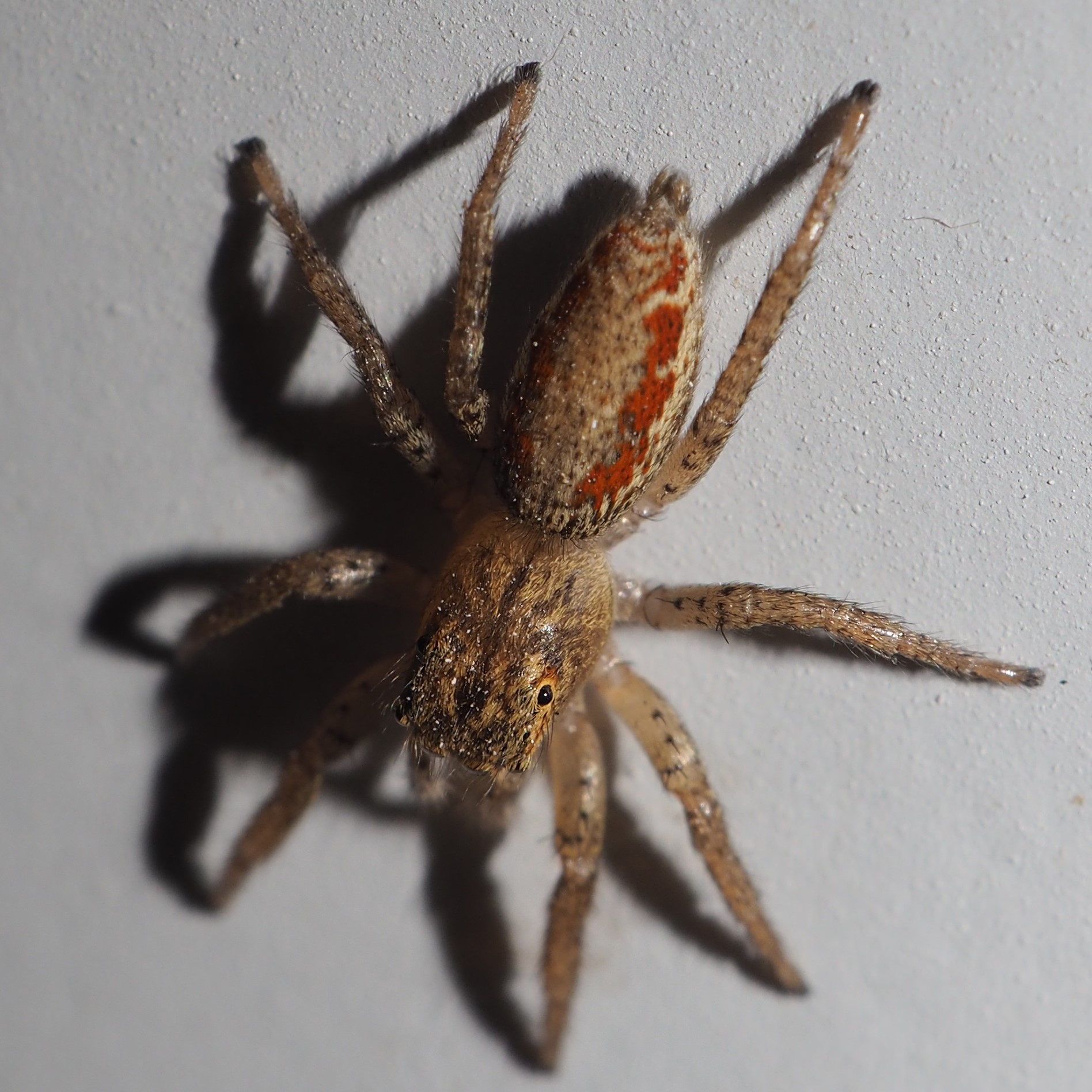
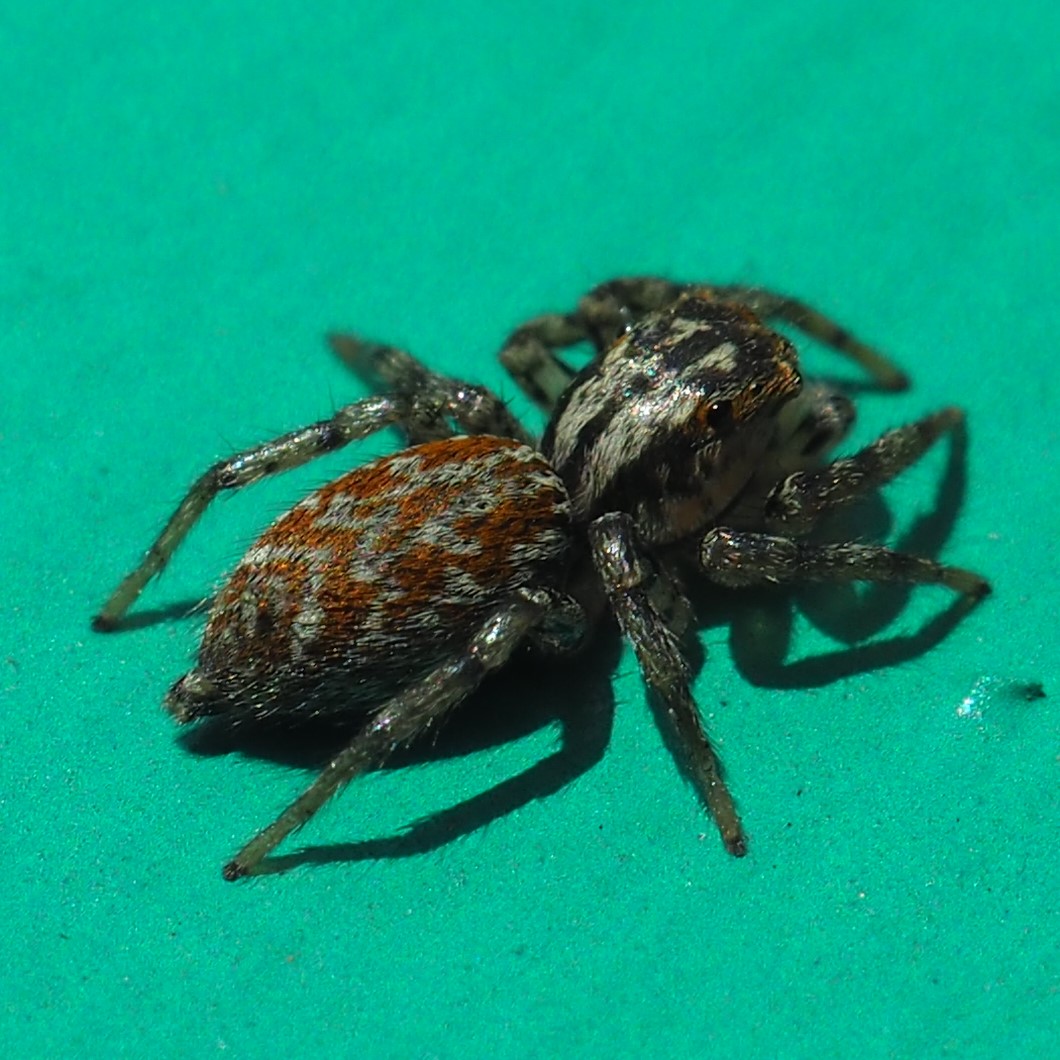
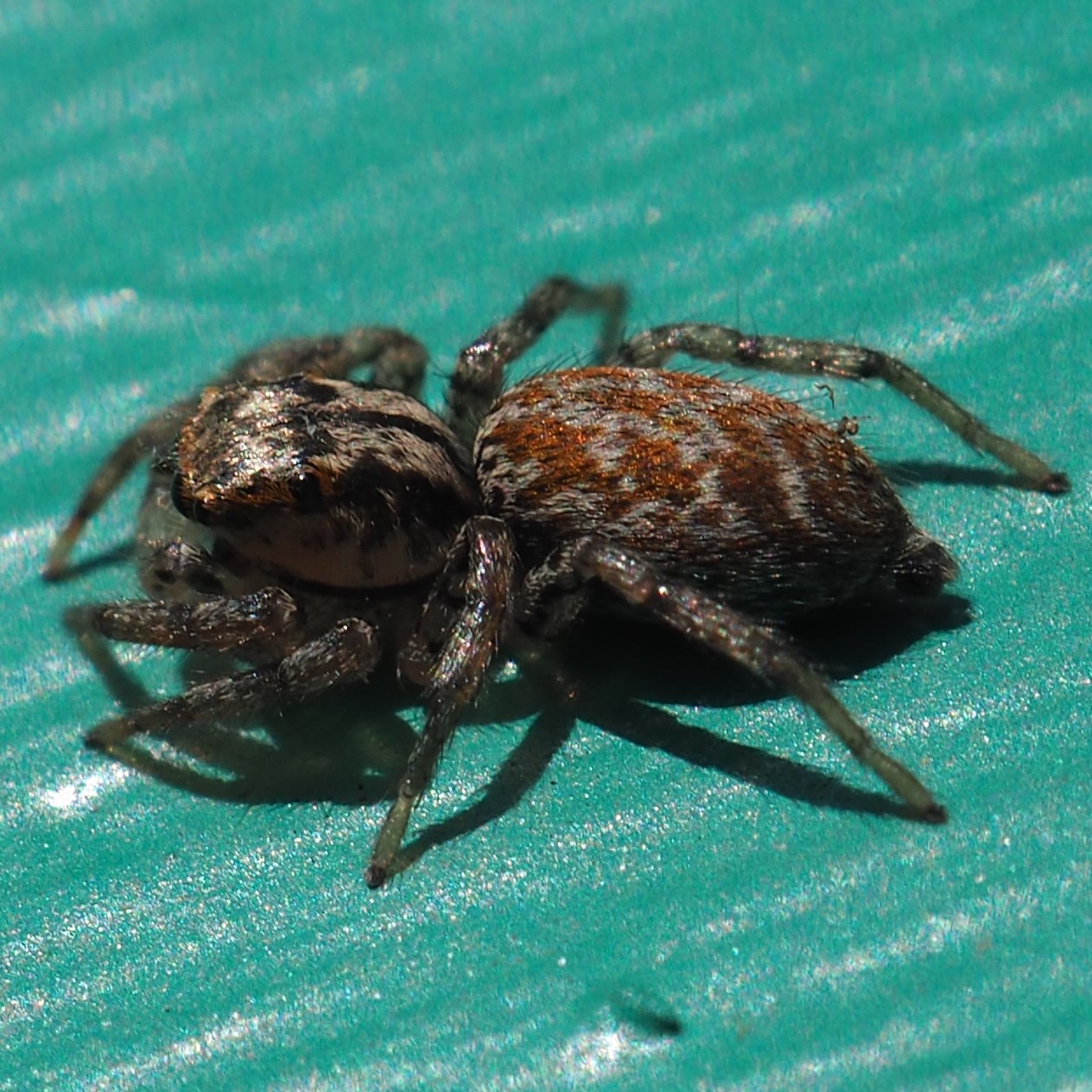
Here's that Lyric Cobweaver again. But next is a new Wolf Spider, either of genus Pirata or Piratula. I think they used to be called Pirate Wolf Spiders. I found two different-looking Western Lynx Spiders. They are so difficult for me to see past the differences.
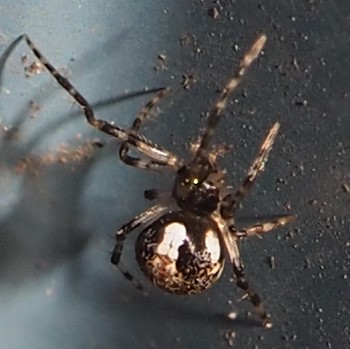
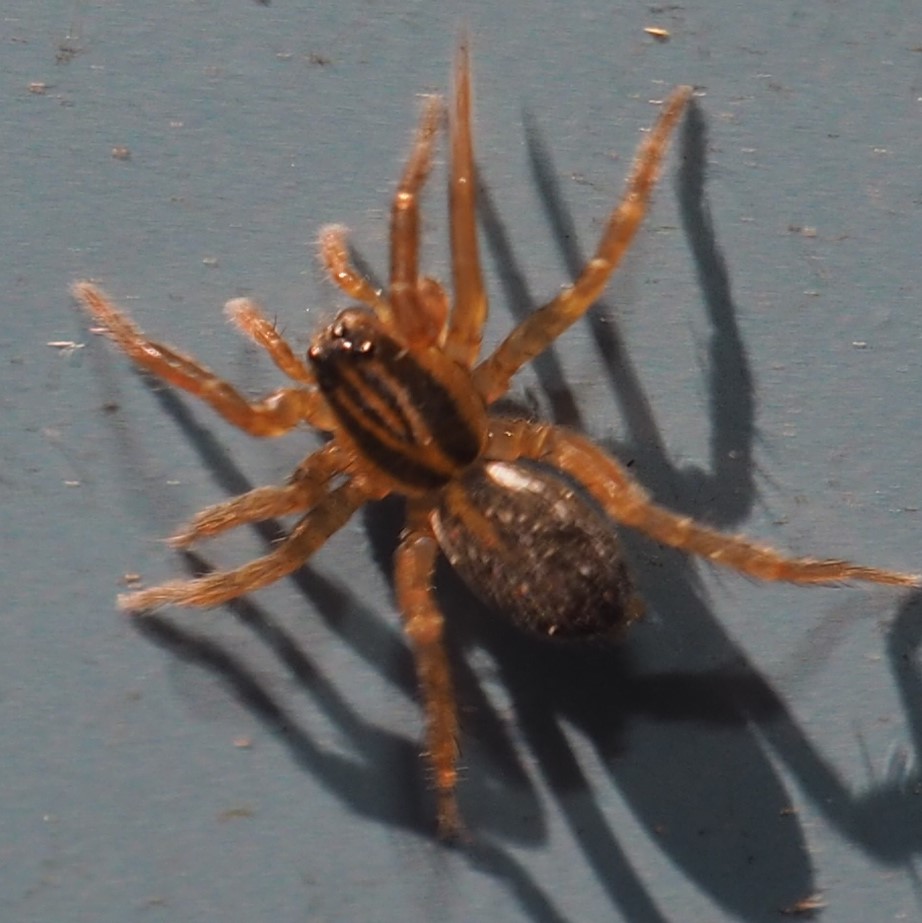
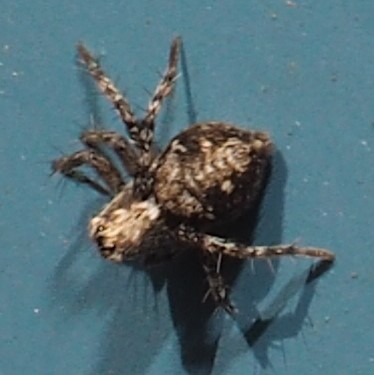
Of course we had a Grammonota Dwarf Spider? Why wouldn't we? Third is another probable Sheetweb Spider.
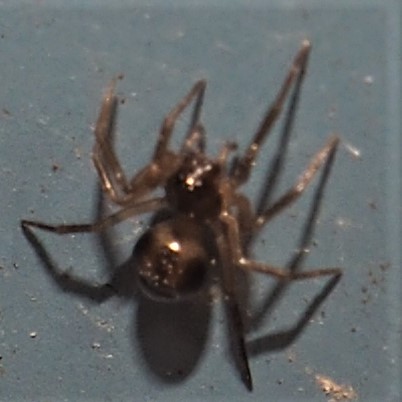
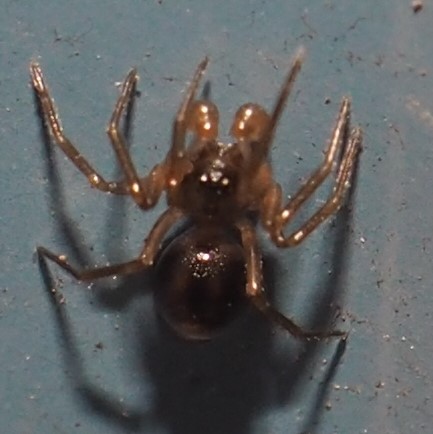
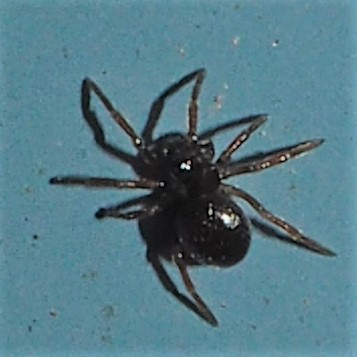
Finally - the fishes. It was feeding time and they all came a-runnin' to the song! The white flakes are the fishy food.
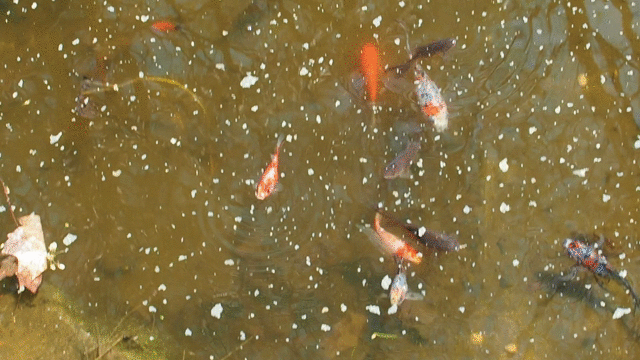
Yet another week and we are still here. Keep that friendship coming from each to each. It's what we need to survive!
Love, Martha
Back to April 19, 2020
Forward to May 3, 2020
Back to main menu
copyright Martha O'Kennon 2020



































































































